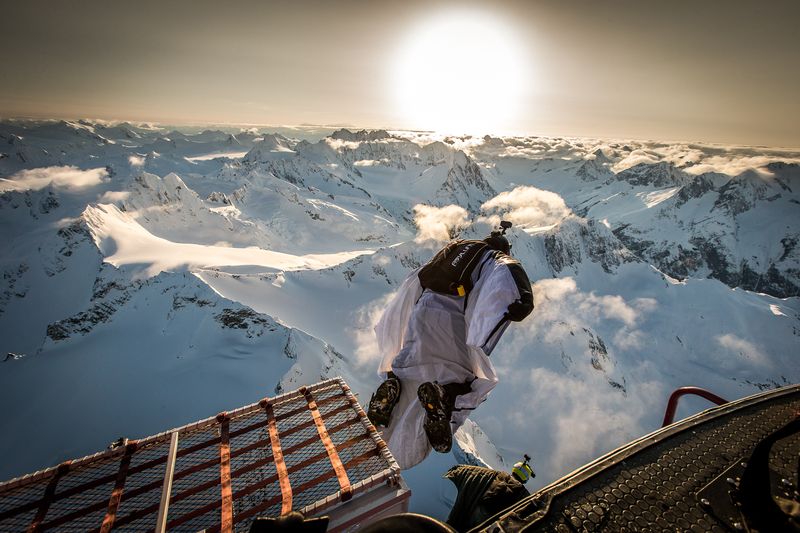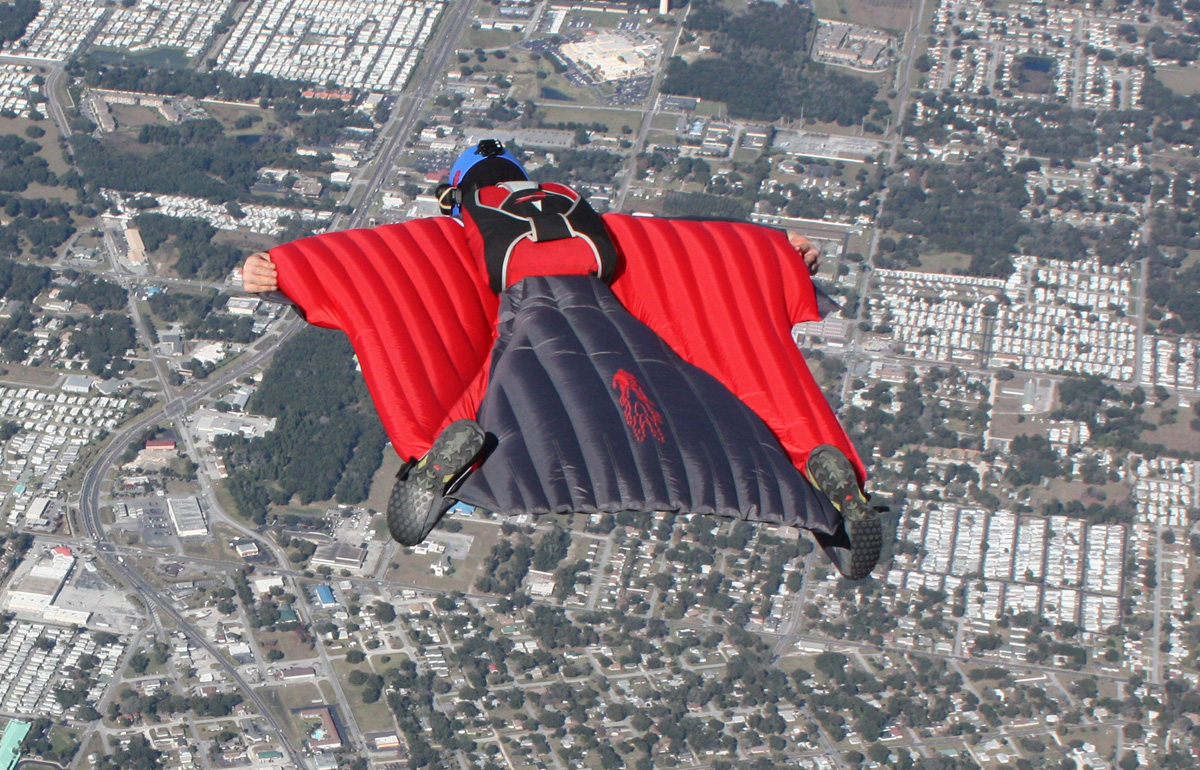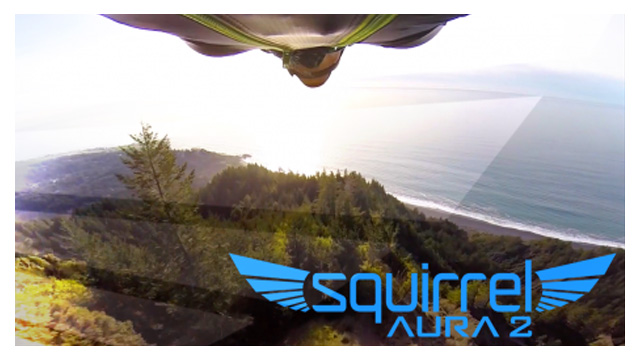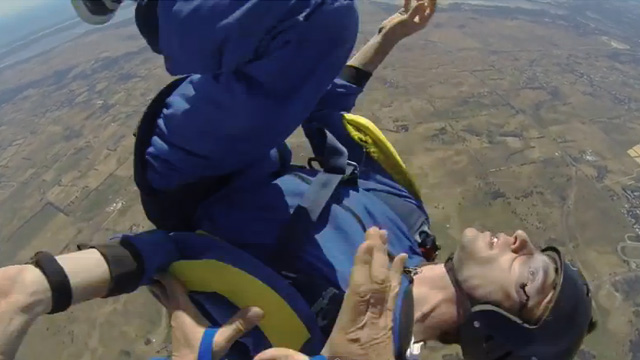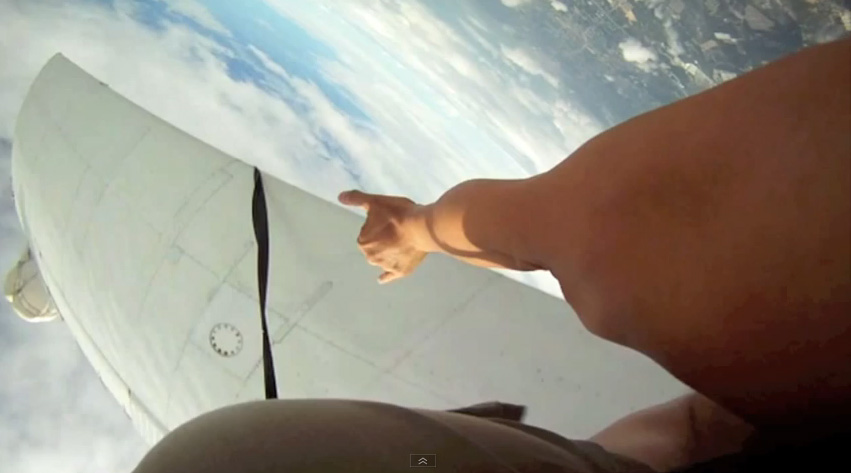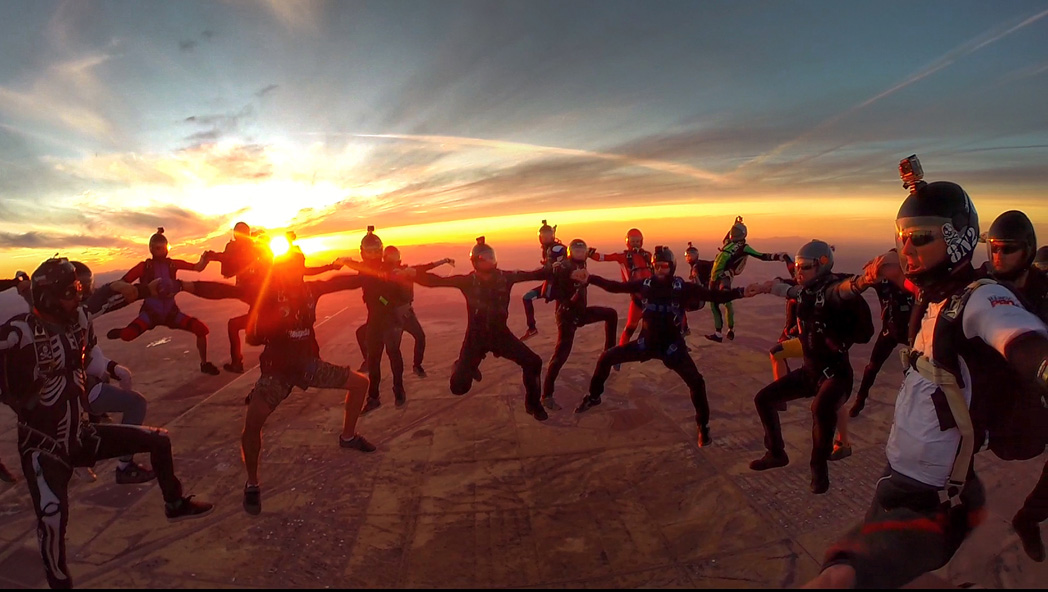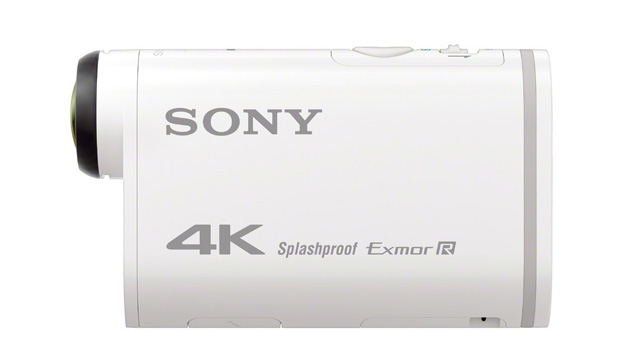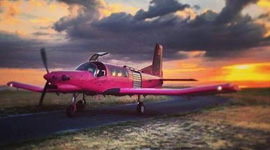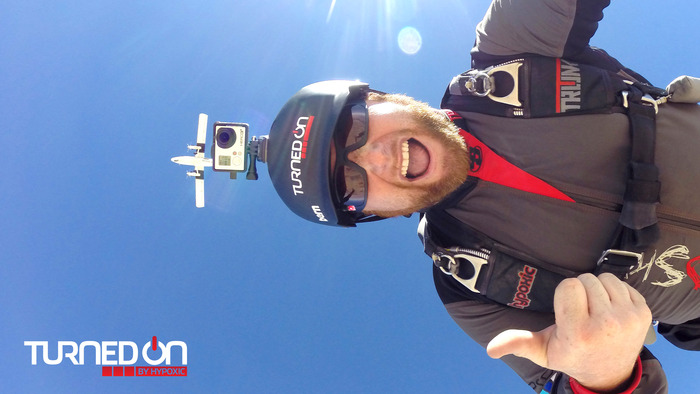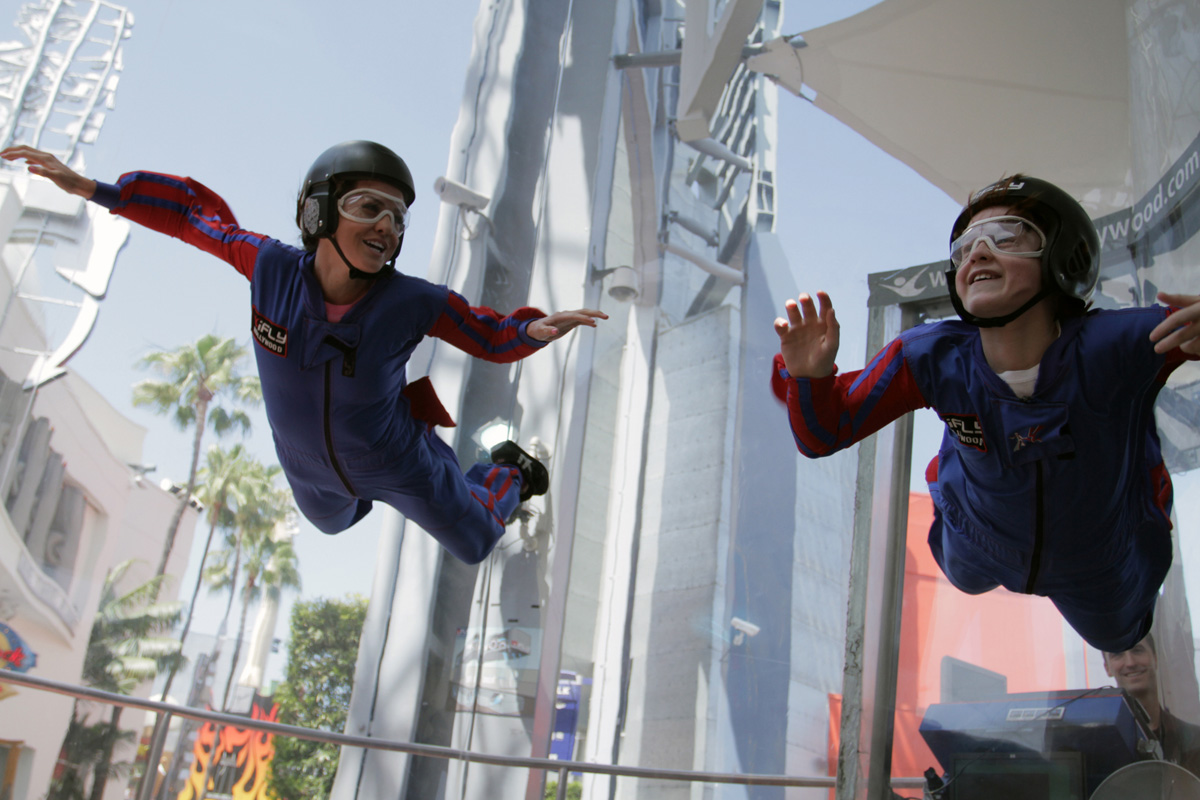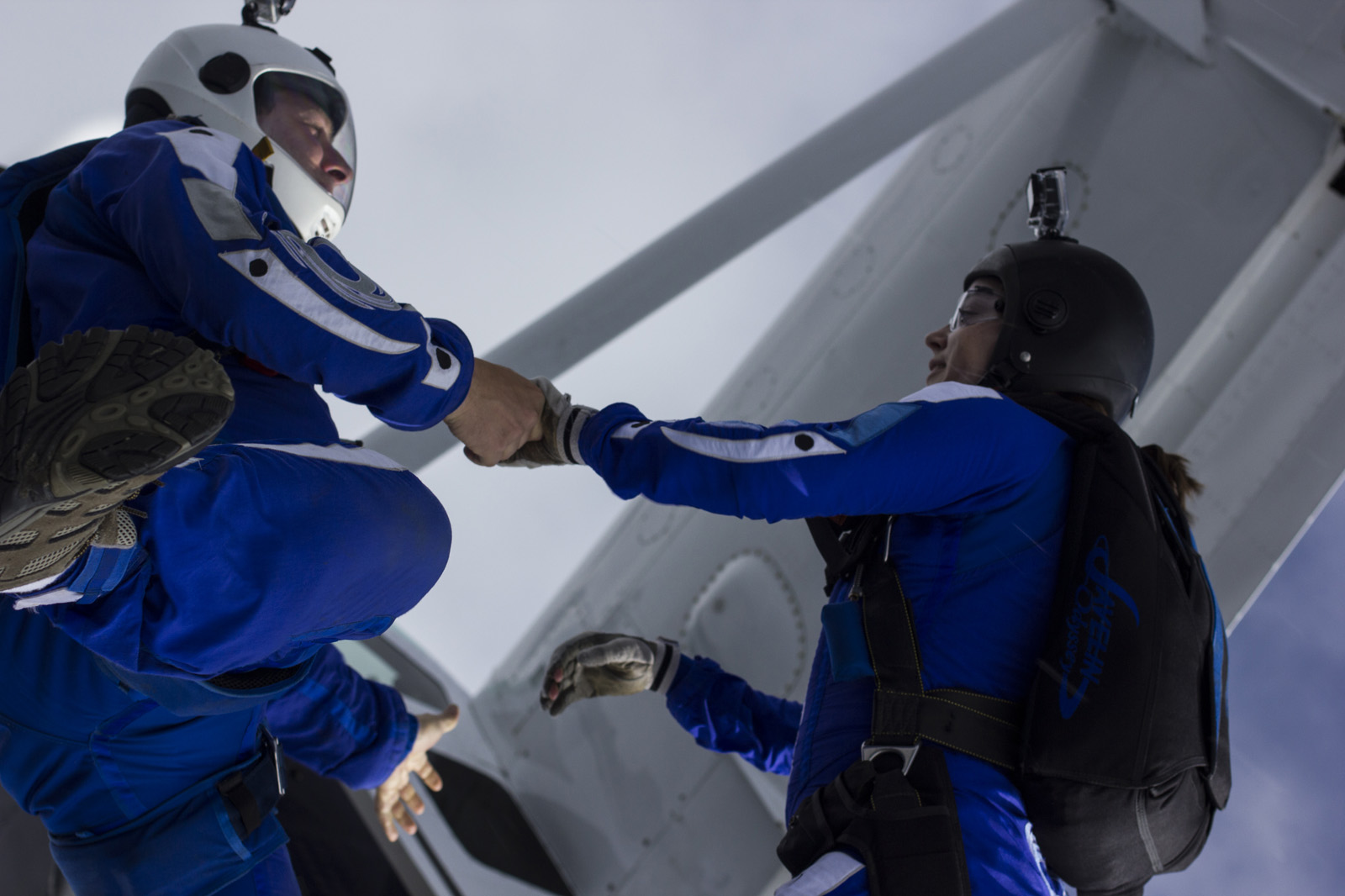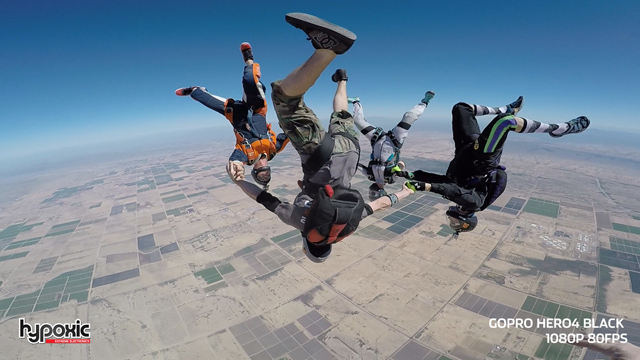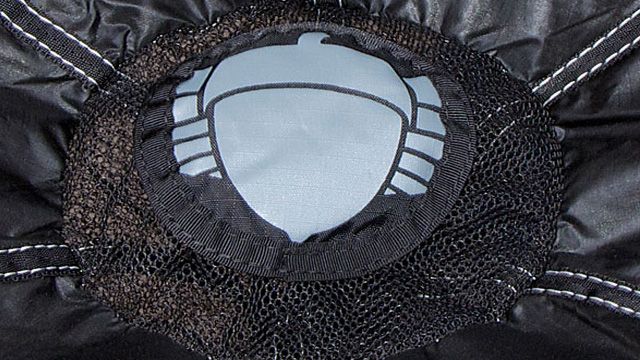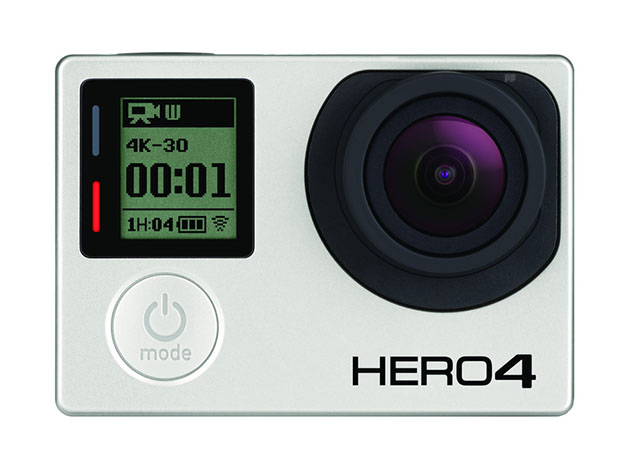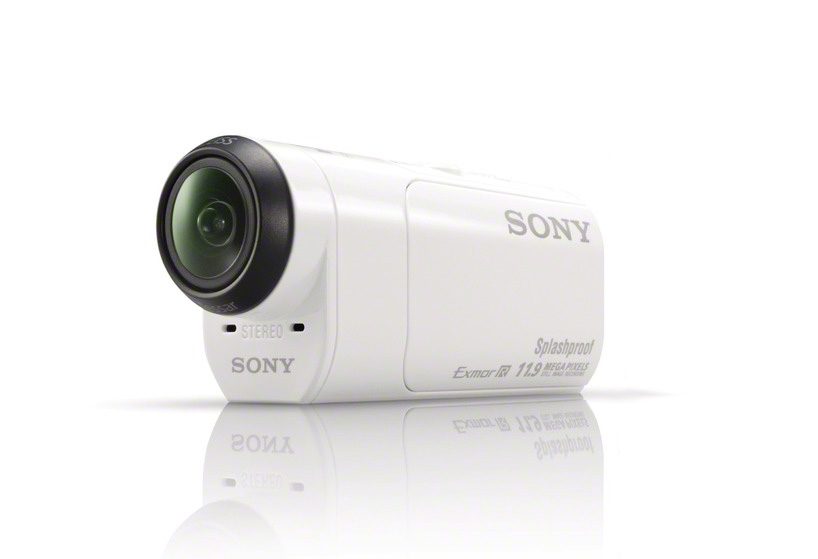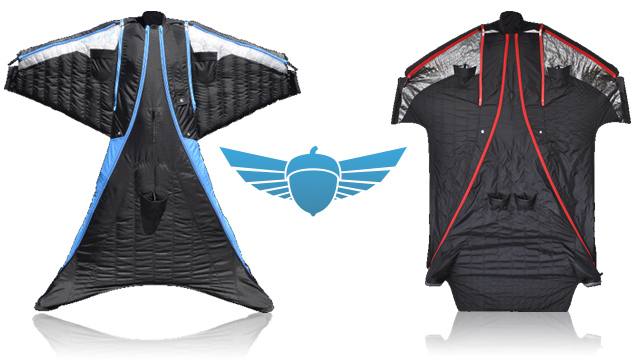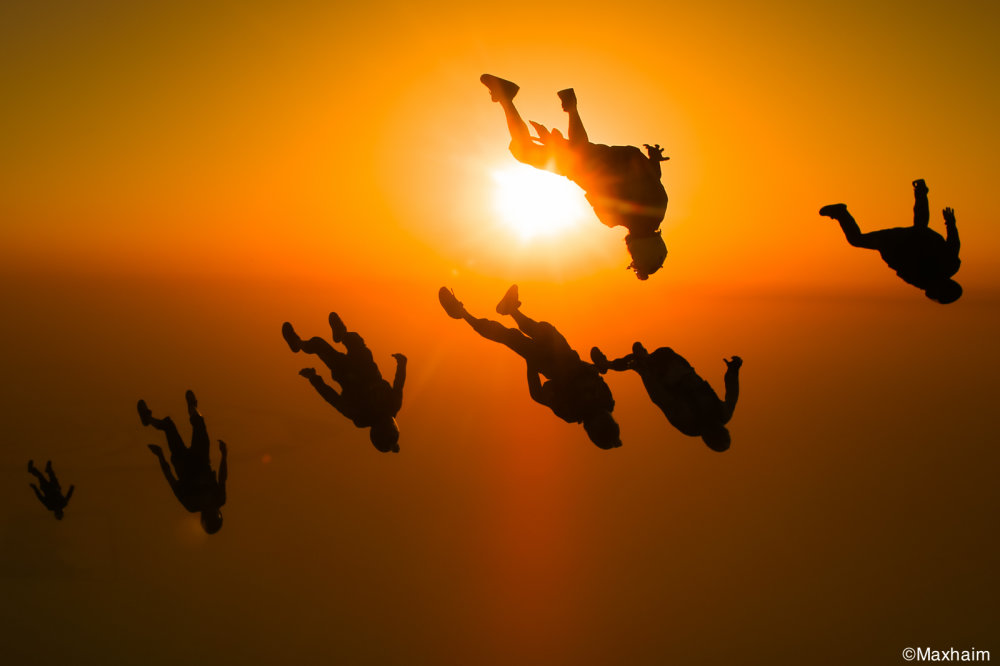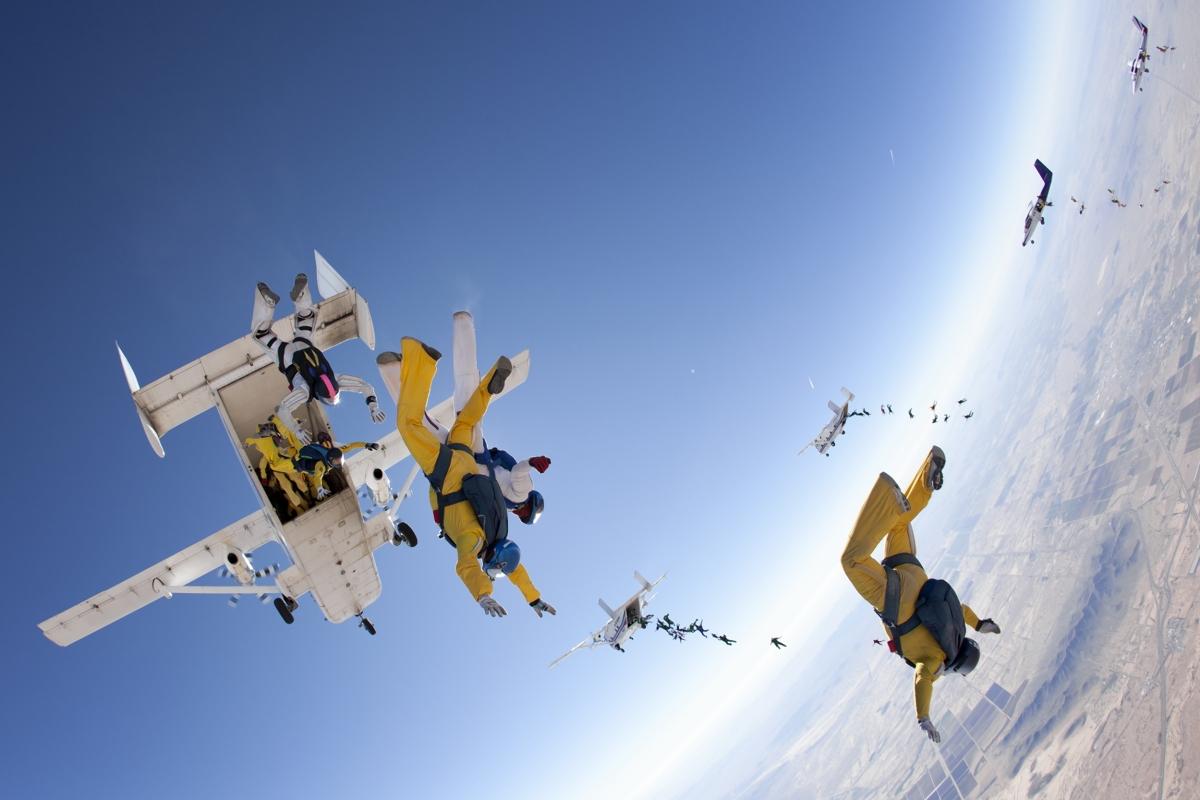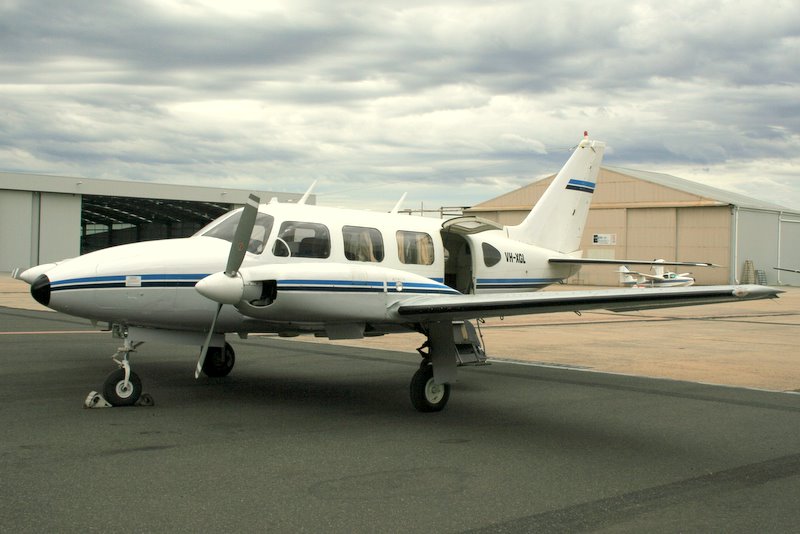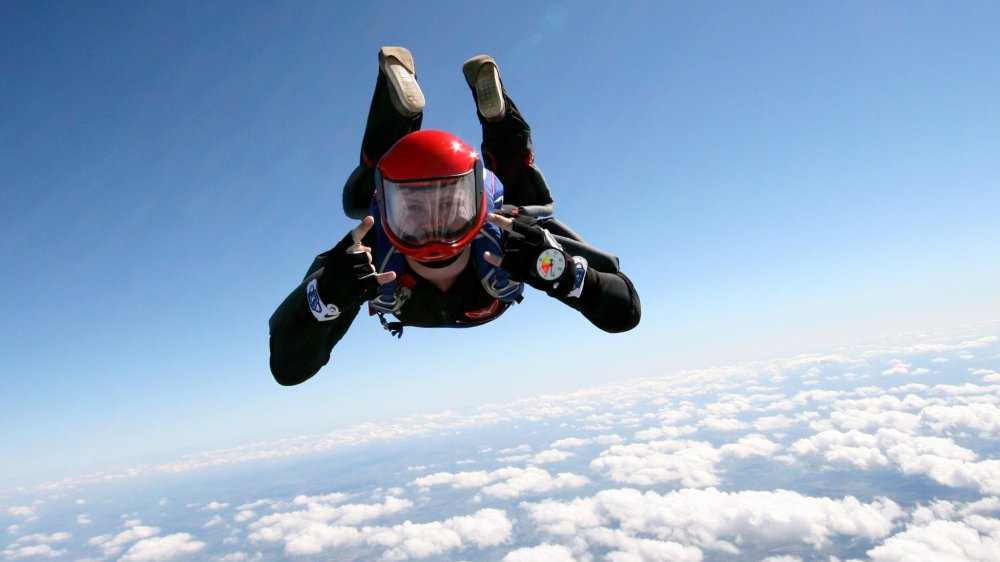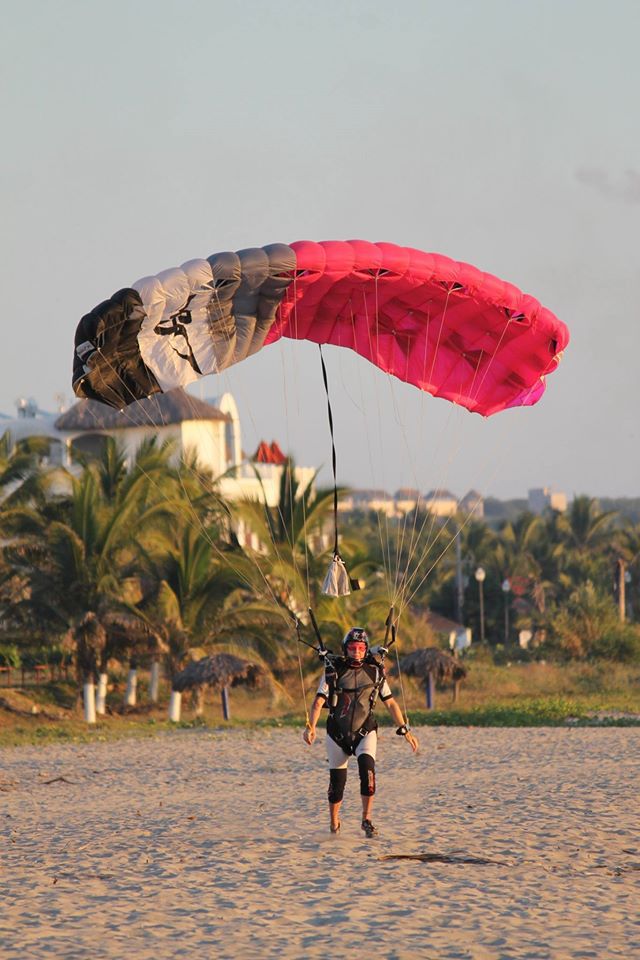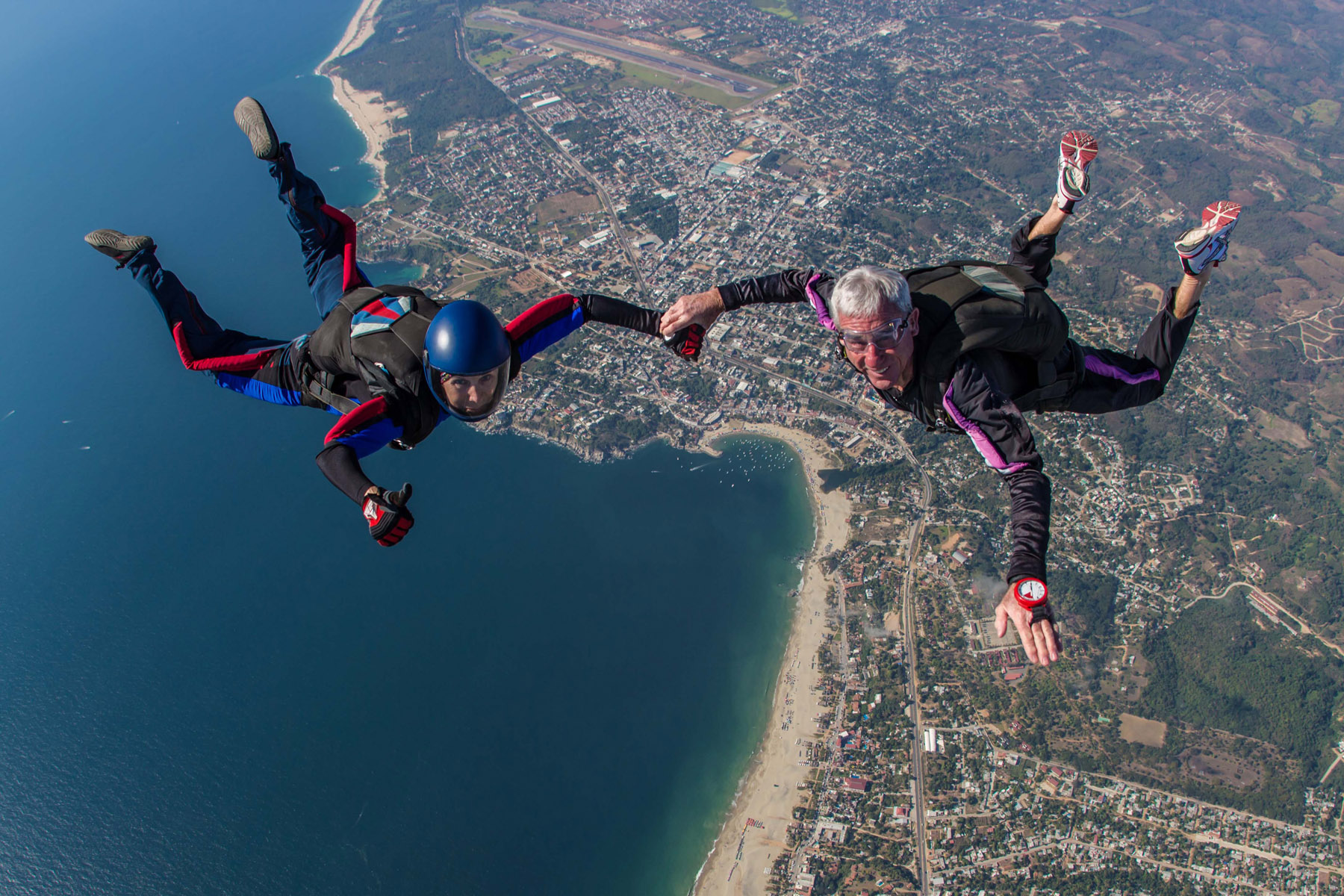Search the Community
Showing results for tags 'news'.
Found 523 results
-
Garmin have just announced two new action camera models that will be released this summer. The Virb X and the Virb XE are the latest attempt from the US founded company to establish themselves as more than just a sports equipment and navigation manufacturer. The original Garmin Virb action cam was released just less than two years ago, and showed that Garmin can do cameras too. After the release of the Virb, which was met with overwhelmingly positive reviews from both users and critics alike, they then introduced the Virb Elite, which added new functionality and recording options. The new Virb X and Virb XE cameras seem to be quite a step up from the Virb Elite, and it appears that the duo is a response from Garmin to the GoPro Hero 4 series which was released last year. However, the focus of Garmin seems to be different to that of GoPro. First thing we noticed, was the change in design from the original Virb cameras. Garmin have moved away from the flatter, elongated design that we saw in their first models and instead have adopted the more square approach, resembling that of the Sony and GoPro devices. In their press release Garmin brings attention to the flat lens cover in the front, aimed to help water in sliding off easier. At this point, with the original Virb being released in 2013 - we decided not to focus on how Garmin has improved on its previous Virb - but rather with how it compares to one of the most popular modern action cams out there today, the mid-level GoPro Hero 4 Silver. Recording vs Connectivity/FunctionalityMany would have expected the new Virb X and Virb XE to support 4k video recording, as it's a direction where most action cam manufacturers seem to be focusing. However, the Virb X will only offer a maximum recording resolution of 1080p, while the Virb XE will allow for 1440p at 30fps. By comparison, the GoPro Hero 4 Silver offers users up to 15fps at 4K, 30fps at 2.7k and up to 48fps at 1440p - as well as offering the standard HD recording options. Instead of focusing on increasing resolution, Garmin have put their trust in the development of connectivity and storage. Despite falling short on recording options both the Virb X and the Virb XE surpass the Hero 4 Silver in terms of connectivity and increased storage capability. Whether or not this will be as easy to sell as telling people that the camera can record 4k video, is yet to be seen, but perhaps Garmin is onto something. Despite the ability to record in 4k video, in every day practice it is not often that one will actually be able to make proper use of that resolution of recording, and most individuals still record at 1080p. Of particular interest to skydivers, is the added ability to overlay recorded data through both standard camera functionality, as well as extra information which can be included through the connectivity between the camera and a sports device. This means that pitch and roll data, speed data, elevation and more can be recorded and overlaid onto the video. See the video below for a demonstration of what is available with the new Virb cameras. Unlike the Hero 4 Silver, both of the new Virb cameras will come with GPS built in. Both the Virb and Virb XE will take Micro-SD cards, and support up to 128GB cards. Both the earlier Virb Elite and the GoPro Hero 4 Silver support up to 64GB cards, so the fact that the new Garmin cameras can handle double the storage space, will definitely be marked as a big positive by many. Other noteworthy functionality: The inclusion of a gyroscope based accellerometer is another feature that is not present in a lot of the other action cameras currently on the market. Both the Virb X and the Virb XE will also be waterproof to 50m, without needing any additional casing. Both cameras will have multi-camera live control and preview for up to 10 cameras. ANT+ connectivity PricingOn paper it appears as though the Virb X and Virb XE are going to be valid choices to look at when looking to buy one of the new action cameras on the market. They look good, offer some great functionality and did I mention that they were well priced? The Virb X will retail for just $299 while you'll need to drop $399 for the Virb XE. Final ThoughtsDespite being stuffed with great new connectivity and some nifty new features, there are some questions raised over the choice to stick to limited recording options for both cameras. Currently the Virb X offers very limited options even for recording in 1080p in comparison to its competition. The Virb X offers only 25 and 30fps at 1080p, where we would have liked to see 60fps being offered. Similarly, Garmin could have really put their foot down by offering 4k recording on the Virb XE. Because of the low price though, if 4k recording isn't on your list of priorities but you find yourself wanting the flexibility of being able to shoot at 1080p/60fps, the Virb XE can offer you that. The real test is yet to come when subjects like how it handles transition between lighting conditions, low light noise levels and video quality can be tested hands on. Compare the Virb X, Virb XE and GoPro Hero 4 Silver Feature Garmin Virb X Garmin Virb XE GoPro Hero4 Silver Wifi Yes Yes Yes Bluetooth Yes Yes Yes Accellerometer Yes Yes No Preview Screen No No Yes GPS Yes Yes No Recharge Method USB USB Mini-USB Recording Time 2 Hours 2 Hours 2 Hours Storage Type Micro-SD Micro-SD Micro-SD Maximum Storage Size 128GB 128GB 64GB 4K Recording No No 12.5/15 fps 2.7k Recording No No 24/25/30 fps 1440p Recording No 30 fps 24/25/30/48 fps 1080p Recording 25/30 fps 24/25/30/48/50/60 fps 24/25/30/48/50/60 fps 960p Recording 25/30 fps 50/60/100 fps 50/60/100 fps 720p Recording 25/30/50/60 fps 25/30/50/60/100/120 fps 35/50/60/100/120 fps WVGA Recording 120 fps 240 fps 240 fps Camera Megapixels 12 MP 12 MP 12 MP Burst Mode 10 p/sec 30 p/sec 30 p/sec Sport Computer Control Yes Yes No ANT+ Connectivity Yes Yes No Sport Data Overlay Yes (Garmin Apps) Yes (Garmin Apps) No Phone Remote Connectivity Yes Yes Yes Multi-Cam Control Up to 10 Cams Up to 10 Cams No USB Connection USB USB Mini-USB Micro-HDMI No No Yes Price $299 $399 $399
-
With the increased popularity of action cameras over recent years it's not surprising that we've seen an increase in the manufacturing of third party hardware that makes use of the GoPro camera to add additional value to users. Hypoxic recently released their Turned On product, which allows skydivers to see whether or not their camera is recording or whether there's any errors, without having to ask their buddy. The company Alti-Force has just released a product of their own that attaches to the GoPro camera and like the Turned On device, will seek to add some extra value to skydivers. When in use the Alti-Force Sensor Pack will be able to overlay information about your flight over the video. The device is able to record and display both altitude and the acceleration/G-Force of your jump. The visual representation of Gs can be useful for those looking to maximize performance, by using the information to identifcal optimum body positioning and technique. Features Subtitled video playback for your GoPro® camera Altitude subtitles selectable as feet or meters Acceleration G-force subtitles selectable as X-Y-Z axes or total magnitude Compatible with GoPro® Hero4 Black and Silver, Hero3+ Black and Silver, or Hero3 Black Fits in GoPro® cases with BacPac™ backdoor² (not included) Compatibility GoPro® Hero3 Black – YES – firmware v03.00 GoPro® Hero3+ Silver – YES – firmware v02.00 GoPro® Hero3+ Black – YES – firmware v02.00 | v03.00* GoPro® Hero4 Silver – YES – firmware v02.00.00 GoPro® Hero4 Black – YES – firmware v02.00.00 All efforts will be made to maintain compatibility with future firmware versions but cannot be guaranteed *v03.00 disables camera’s USB mode, use of memory card reader is required Any that support .SRT subtitle files (check your player’s specifications) Includes most TVs and VLC media player (for all OS platforms) Video must be played via USB mode or memory card reader If copied off camera, video .MP4 and subtitle .SRT files must be copied to same location Note: Windows® Media Player and QuickTime do not support .SRT subtitles Camera Modes The Alti-Force Sensor Pack records data/subtitles in Video Mode only. All standard video resolutions and frame rates are supported. The Alti-Force Sensor Pack does not support Time Lapse and Looping video modes, and is disabled in all Photo modes. Mechanical Size: 2.36 x 1.38 x 0.40 in (60 x 35 x 10 mm) Weight: <1 oz (18 g) Electrical Standard camera voltage: 3.6v (powered from camera) Minimal current draw: <2 mA typical Accelerometer Tri-axial | ± 16 G’s | 0.1 G resolution Barometer Absolute Pressure: 300 to 1100 mbar | ~0.1 mbar resolution Altitude range: -2000 to 30,000 feet | 1 ft resolution Pressure to Altitude conversion assumes standard conditions. Sampling RateHero 3/3+: approx 4.5 samples per second Hero 4: approx 6.5 samples per second Subtitle Settings Altitude: Feet | Meters | Both | None Acceleration: XYZ axes | Total magnitude | All | None G-bar: On | Off Temperature: °F | °C | None — Additional options — Data CSV file (saves all raw sensor values): On | Off Altitude offset: Feet only More information on the Alti-Force Sensor Pack can be found on the Alti-force website.
-
This year the stars aligned to bring the right people to the right place at the right time. The result was official FAI recognition of Wingsuit Competition for Performance and Acrobatics disciplines. Then without any loss of momentum, the announcement of the 1st FAI World Cup of Wingsuit Performance Flying to be held in the UK this year. This competition is now just a few weeks away. If this is the first you’ve heard of it and want to get in on the action then you need to act fast and continue reading. IPC Plenary in Bulgaria 2015Wingsuit competitions have been around for many years. In January this year, the IPC were presented the highly developed competition formats for both Performance and Acrobatics for consideration. The IPC delegates voted in favour of adopting both sets of rules and also unanimously accepting the bid for the UK to host the first Wingsuit World Cup. We now have an IPC Wingsuit Committee, can declare World Champions and set new World Records! The EventOn the 25th May 2015 the Wingsuit World Cup will commence at the World’s longest continually operated airfield. This is located just a few miles from the historic site of Stonehenge on the outskirts of the small Wiltshire village, Netheravon, UK. It will be hosted by the Army Parachute Association, a not-for-profit skydiving club who have successfully run this competition with the same format for the last three years. Athletes from all over the World are currently making travel arrangements for their opportunity to represent their country on the world stage. As a recently recognised World Cup event the opportunities to set new world records are to be amongst the main attractions. Top of the billing however is a chance to be immortalised as the first FAI World Cup Champion of Wingsuit Performance Flying. The goal of this competition is to find the flyer with the best all-round performance flying capability using Time, Distance and Speed tasks. A fixed competition window of 3300ft (1000m) is used, measured using a Flysight GPS logger and evaluated using the Paralog software which provides real-time results on-line. In 2014 there were 20 competitions and over 300 participants worldwide. New to 2014 was a World Series incorporating four events held in the UK, Hungary, Germany and the USA. The World Series 2014 winner was declared following the USA competition in Lake Elsinore last October and is the organiser of this inaugural World Cup. The outline programme for the 2015 World Cup is as follows: Sat-Sun 23-24th May All Day DZ Open as normal for early registration and practice Mon 25th 08:00 All day 17:00 Judges’ Conference & Start of Judges’ Training Course Arrival of Delegations, Registration, Practice Jumps until 15:30 Opening Ceremony Tue-Thu 26-27th May All Day Competition days. First call 07:00, competition continues until sunset. Fri 29th May 07:00 All day 18:00 20:00 Last Competition jump take-off at 14:30 End of Judges’ Training Course at 16:00 Closing Ceremony Banquet and Evening Celebration at The Stones Hotel How to get involved Competitors should read the official Bulletin by following the links below and then contact their country’s national governing body to apply to enter. The deadline for preliminary registrations is 25th March but there is still some time as final registration is not due until 25th April 2015. All other enquiries about participating or exhibiting at the event should be made directly to the organiser whose contact details are also listed below. Thank you This article isn’t long enough to credit all the people who have made this happen. You know who you are, you’ve made history, now let’s fly! Links FAI Website: http://www.fai.org/ipc-news/39178-wingsuit-performance-flying Organiser Webpage: www.netheravon.com/wswc2015 (Registration, Bulletin and Rules) Competition Rules: http://www.fai.org/fai-documents (Sporting Code Section 5) Organiser contact details: Jackie Harper can be reach via email at: [email protected]
-
The latest addition to the Squirrel inventory has been made available for pre-order this week. The Aura 2 will be the successor to the originally Aura suit, which saw favourable reviews and quickly established itself as a popular BASE jumping suit. While no information has been provided yet by Squirrel, as to the specifications and features of the new suit, it's expected that the Aura 2, like its predecessor - will be a BASE focused wingsuit. Even with the original Aura design though, Squirrel ensured that the suit was catered as much as possible to skydivers, with several features including a 'Skydive Mode'. More information about the Aura 2 will be provided when it's released by the company. But for now, all we have is 40 seconds of teaser footage.
-
Christopher Jones, a 22 year old from Perth, Australia - has found himself in the spotlight of news agencies over the past 24 hours. On 1 March 2015, Christopher uploaded a video to Youtube of him suffering a seizure during his 5th level of AFF training at WA Skydiving Academy. According to him, the video was originally recorded about 3 months ago but due to travelling, he only got around to uploading it now. Within 24 hours of uploading the video had received over 2.5 Million views and been picked up by news centers around the world. In the video, you can see Christopher Jones being assisted by his instructor, Sheldon McFarlane - as he gets his foot placing in the right position for his exit. After exiting the aircraft, he is seen establishing his body position and things seem to be going well, but soon Mr Jones, who was described by the Dropzone Chief Instructor as "The perfect student" up until this point, begins to lose control of his body position. Instructor Heroics Gets Main Deployed at 4000 feetMcFarlane, who while unaware of the fact that the problem was a siezure, could see that Mr Jones was in trouble, and began an attempt to get close enough to him so that he could help in the release of his parachute. After a failed first attempt, Mr Jones is seen gaining speed, plummeting towards earth. Despite the difficulty in catching up with the student's speed, McFarlane then managed to grab a hold of him and release his [parachute, at around 4000 feet. When interviewed about the incident, McFarlane stated that even though he knew that the AAD would deploy, he wanted to ensure that the student had as much time under parachute as possible. This proved to be a wise choice and Mr Jones regained consciousness at 3000 feet, allowing for him to gain control and in turn safely land his canopy. While AADs deploy vast majority of the time, there have been incidents where the AAD has failed, and getting the chute deployed manually will almost always take preference over relying on the automatic activation device. Questionable Medical ClearanceMr Jones has had a history of seizures in the past. Originally wanting to become a pilot, Jones had to put that dream aside due to his epilepsy. A doctor-issued medical statement is required before one is able to begin AFF training. Mr Jones' specialist gave him the all clear for his training, with Jones not having suffered any seizures for four years prior to this incident, a subject that has caused some debate of its own, with many doctors feeling as though skydiving would be an activity that no epilepsy sufferer should partake in, due to the risks. Unfortunately with the occurrence of this incident, he will no longer be able to continue his skydiving career, for obvious reasons. While seizures can be unpredictable and occur at any time, stress is thought to play a role in many cases. Naturally undergoing a skydiving program where not only are you aware of the safety risks, but also have the added pressure of passing or failing your level progression, stress will almost always be heightened.
-
Despite having occurred late last year, a recently uploaded Youtube video showing an extremely close encounter between a tandem instructor, passenger and the jumpship they just exited from, has gone viral. The 4 minute long video (including editing) was shot in October 2014 and shows a tandem instructor, from what has been determined as a Thailand based skydiving operation at an estimated 13 000 feet (a typical exit altitude for tandem jumps). Twelve seconds after the TI and passenger exit the plane, the plane comes into view of the camera and can be seen diving quickly in their direction. The camera speed is then slowed down and shows the plane moving closer, with one frame showing the bridle and drogue of the TI wrapped around the wing of the plane. It appears as though the drogue bridle was cut when it wrapped over the wing and can be seen waving behind the TI in some of the frames. He then deploys the reserve shortly afterwards. The passenger appears for the most part, unaware of exactly how close the pair came to death during the incident, with the video later cutting to text on screen suggesting that the TI had just explained what had happened, while they were under canopy. There has been quite a bit of conversation around just how this happened, whether it was purely pilot negligence - or whether perhaps a close fly-by is something that is pre-arranged with the TI and pilot, in order to give the passengers a more thrilling experience. While there is no clear evidence to lead one to make such a damning assumption, several individuals have noted the TI's apparent eagerness to get the passenger to look in the direction of the descending aircraft, even before it has entered the frame of the video. Others are calling the TI a hero for the professional way in which he handled the incident, staying calm and getting both himself and the tandem passenger safely on the ground. Regardless of the details behind the incident, it's clear that those involved are lucky to still be alive. A discussion about the event is currently taking place in the forums in an incidents thread.
-
Image by Ben NelsonNiklas Hemlin of Arizona Airspeed ventured out with a goal in mind and captured his first World Record - but not in belly flying, in the new category, Head Up. Not many long-term and committed belly flyers transition over to freeflying later in their skydiving careers. Especially one that has invested most of their lives into belly flying. It's refreshing to see that the boundaries of belly flying and freeflying are starting to blend. Name: Niklas Hemlin Jumps: 15,500+ (just below 16,000) RW Jumps: 13,000+ Freefly Jumps: 100 ML: How many competitions have you been to? Niklas Hemlin: I have attended 35 national and international recognized competitions. You couple probably double that number if you were to include local and none recognized events. ML: How many medals have you won? Niklas Hemlin: More than 35. ML: Do you have any previous world records, if so, which ones? Niklas Hemlin: I do not have any belly big formation world records J This would be my first big-way world record. I have an un-official world record with Airspeed for the highest 4-way average from when we won the World meet in Dubai 2012 at 27.9 average points. ML: What motivated you as a young jumper and how did you get the idea to tryout to be on Airspeed? Niklas Hemlin: What motivated me as a young jumper was the next jump. I was head-over-heels in love with our sport and the whole nature of it…jumping out of a plane, plunging towards the ground in freefall, pulling your parachute, and safely land to do it all over again. Since then, my love is all the same and more intense than ever. I seem to effortlessly find new ways to keep my passion and intensity for our sport. It has so much to offer me and it is literally limitless. To me, it’s a lifestyle and way of life. ML: What is your new position on Airspeed? Niklas Hemlin: I used to be the inside center and now moved to the point position on Airspeed. Each position on a 4-way team comes with its own style and characteristics. Throughout my 4-way career, I have been floating around all the different slots and found that each offer its own challenges and satisfactions. It is always fun to be put in a situation to learn and refine a new style and to push yourself. To me, it keeps it all fresh and motivating. Performing any slot on a world-class level requires absolute dedication and focus. ML: You're more known in the community to be an RW skydiver, when did you start freeflying? Niklas Hemlin: I seriously started to freefly January 2014. I did do some freeflying back in 1997 here at Skydive Arizona after spending three months in Florida training with my Swedish 4-way team. Since then, I haven’t done any freeflying until I started up in the tunnel this year. I have managed to accumulate about 50 hours in the tunnel YTD and around 100 freefly jumps. I hope to meet my goal of 52 hours of tunnel for this year and 150 jumps. I’m a very goal oriented person and find it hard to keep my competitive spirit at bay. I had a goal of getting to a level in my freeflying that I could go and fly in the tunnel and in the air for fun and hold my own. I remember very vividly seeing people fly in the tunnel and in the air and wanted nothing more than to fly like them, effortlessly float through the air on all angles and on all their body’s flying surfaces. I looked so appealing and fun to me. Airspeed is my heart and soul and takes up a lot of time and dedication. It takes all you time and devotion to become a world champion or a world class flier in any discipline. That being the case, I felt I had to spend the 2014 season to learn freeflying before I transitioned back onto the team as an active member from being an alternate for the 2013 and 2014 seasons. ML: What motivated you to participate in the upright world record? Niklas Hemlin: To put myself in a situation where I HAD to perform. I remember seeing and hearing about the upright record and the headdown big-way scheduled for the fall at Skydive Arizona. I used it as a goal to progress enough to where I could at least participate in the upright warm up weekend. That was enough motivation for me to keep my focus and training. The warm-up weekend went well enough that I was asked to participate in the record attempt. To be honest, I was, and in my opinion still am, not very good on my headup. It is a challenge for me because I really struggle with getting the hang of it and become as comfort and fly as effortlessly as I see others fly. Image by Ben NelsonML: Can you tell me what kind of struggles you had on the record jumps and how you overcame them? Niklas Hemlin: The most overwhelming part of the headup warm-up and record was my visuals. What is left and right headup is right and left headdown. Wow, flying headdown to the formation from exiting head up and then get there to transition back into headup. Oh boy, that was a mind f*#ker (teaser). To be honest, I did not figure than one out until the second day of the record. The second biggest challenge for me was to keep my mind at bay. I was filled with excitement and anxiety and had to calm myself and focus on my basics. Freeflying is not all instinctive and I have to think about what I’m doing and what I need to do. So, if I don’t keep calm and anticipate my flying, it all goes to shit. ML: How much of the Upright World Record principles were like belly fly big ways? Niklas Hemlin: I would say a good 99.9%. That was a huge advantage for me having so much experience with big-ways. That was the easy part. At least I didn’t have to stress out about that. ML: What would be your advice to other belly flyers about getting into freeflying? Niklas Hemlin: Lower your expectations and embrace the whole process of sucking. Do it for fun and understand it is nothing like belly flying, but at the same time, it is just like belly flying. For me, it was very healthy and humbling to “suck” at something again. It was very refreshing to be a student again and having to learn and unlearn. Being the guy in the room with the least amount of experience and, literally, being a safety hazard was a lot of fun for me. Just something about being in the early stages of something new and falling in love with it and not being able to get it out of your head. Oh yea, and it will improve your belly flying tremendously!
-
Sony FDR-X1000VSony have started off the first quarter of 2015 with a couple of action camera announcements that are likely to excite fans of the Sony series. At CES 2015, which was hosted last week, Sony unveiled two new models of action cameras, venturing into the 4k action cam market. Sony are no newcomers to 4k recording products and have been selling 4k recording devices for a few years already, but moving in the direction of smaller and cheaper recording devices such as action cameras is a big step towards general consumers. Along with the new announcement for the 4k action camera, was the announcement of a new HD action camera, a new version of one of the company's popular cameras. The first of the two cameras announced at CES is the FDR-X1000V, the 4k action cam product that will aim to compete with the new GoPro Hero 4. The X1000V will be able to record 4k video (3840x2160) at 30fps, with focus also being placed on enhancements to the HD recording options, stabilization and frame rate. The enhancements in stability come from an upgrade to the company's trademarked "SteadyShot" technology, which is promoted as being 3 times better at handling certain vibrations. With stabilization being such an important part of recording skydiving footage, it will be interesting to see how the X1000V does in comparison to the other Sony action cams on the market. Also beneficial, especially to skydivers - is the new, enhanced wind noise reduction. While the focus of the X1000V definitely appears to be the ability to record in 4K, the camera also boasts some impressive recording abilities at both full HD and standard HD. Up to 120fps is supported for Full HD recording, while Standard HD allows for 240fps recording. Sony HDR-AS200VThe second camera to be announced is the new HDR-AS200V. Last year Sony unveiled the AS100V, which in turn became quite a popular action cam. The AS series of Sony action cameras have in fact probably been the most used Sony product for skydivers, with the releases of the AS15, AS30 and AS100 in just a few short years. We've done extensive testing on some of these models in the past, and they have always performed well, with the Sony AS30 coming out on top in our Action Cam Shootout last year. The AS200V will receive the same boost in stabilization and noise reduction as the above-mentioned X1000V, while offering recording in 60fps at 1080p, 120fps at 720p and 240fps in the WVGA video format. New Features For X1000V and AS200VSony have extended most of the new features they have developed to both of these cameras, and it appears that the only real differences between models will be the ability for 4k recording on the X1000V, as well as a more enhanced underwater casing that is provided with it. Built in GPS & Action Cam Movie Creator Action Cam Movie Creator is software that is included with both the models and allows for the easy creation of videos, which can also use the built-in GPS to display the GPS details in an overlay of the video. Highlight Movie Maker For those who don't want to spend the time creating a movie from a series of clips, the Highlight Movie Maker will offer the ability to quickly and easily produce smaller mp4 video format highlights of a video, along with being able to add music to the video. The Highlight Movie Maker uses an algorithm to detect where the action is happening within the video, and then cuts out scenes which it detects as unimportant. Live View Remote With the new cameras come a new live view LCD remote. The Sony RM-LVR2 is a waterproof (to 3 meters) offers extensive control over both the AS200V and the X1000V, with the ability to control recording, playback, deletion of files. The live view functionality also means that you'll be able to get a clear preview of what is being recorded. Release Dates & Pricing: The X1000V and AS200V will be available from March with the X1000V being priced at $500, packaged with the enhanced SPK-X1 waterproof case. For the live view remote bundle, you will be paying $600. The AS200V will go for $300, and include the SPK-AS2 waterproof case and tripod mount. The live view remote bundle will also cost $100 extra, and set you back $400.
-
A group of tandem skydivers, as well as a pilot managed to come out alive after a near disaster over Lake Taupo in New Zealand this week. Media sources reported on Wednesday that a group of 6 tandem instructors along with 6 clients were looking to perform jumps at Skydive Taupo, when the aircraft that they were traveling in began to experience problems, forcing them to evacuate. All thirteen individuals, which included the pilot had to leave the aircraft mid-flight while the recognizably pink PAC750 aircraft crashed into Lake Taupo. The plane was reportedly flying at just over 4000 feet at the time of the incident, which is said to have been engine troubles. While 4000 feet is well below the general altitude for a tandem skydive, it was enough altitude to ensure that all the passengers, including the pilot landed safely and that everyone escaped serious injury. A loud noise was heard coming from the engine just seconds after it was evacuated by the pilot, the plane then crashed in the lake below - managing to miss boats and individuals swimming in the lake. Skydive Taupo is a tandem focused dropzone which opened in 2003 and offers customers tandem jumps at 12 000ft or 15 000ft. The pilot who ordered the evacuation of the plane prior to the incident had only recently started working with the company, but is an experienced pilot. Skydive Taupo has since posted a message on Facebook giving thanking people for support and giving props to those involved on their handling of the situation. Post by Skydive Taupo.
-
In May of 2014 the skydiving-focused electronics company Hypoxic began a Kickstarter campaign that sought out a goal funding of $30,000 in order to develop a status indicator for the GoPro action camera. Despite dominating the market for several years, neither GoPro or its primary competitors come with a feature or piece of hardware that allows the user to easily determine the status of the camera or its recording. For sports where the GoPro is mounted out of sight, such as the popular helmet mounting method, this can often cause hesitation when trying to remember whether you may have pressed record or whether you put the SD card back. Hypoxic's goal was to try and provide a useful and easy way of determining whether the camera is functioning as it should, while also removing that hesitation from the minds of the jumper. As quoted from the Kickstarter page: "In our sports, these uncertainties are not just unsettling: they’re dangerous. As an athlete, you know: before riding down this line, starting this race, jumping out of this plane, launching down this mountain, you need an absolutely clear head. Nothing good can happen when personal safety takes a backseat to a blinking light." By the end of June last year, the Kickstarter campaign had raised $43,049, more than $13,000 over the original target amount. Incentives for backers ranged from stickers for those that pledged $5 or more, to Turned On units with early shipping for backers that pledged over $180. Over the past 6 months the Kickstarter units have been sent to the backers of the campaign and were well received. The Turned On units have now begun shipping to outlets and are available for public purchase. What Does It Do?The Turned On unit makes use of 3 colored LED lights to provide information as to the status of the camera. When the camera is recording, the light will be solid red. When it is on standby a blue light will be displayed. When an error is present it will display either a solid yellow or a flashing yellow light. When the light is flashing yellow, it indicates a potential impending interruption to recording, such as low card space, low battery or high temperature. A solid yellow light indicates an error and in this case, the camera will not be able to record, such as in situations where the card is missing or corrupt. The device will work in all modes, and show the active recording light whether you're recording video or shooting a series of images in burst mode. What separates the Turned On indicator from other indicators on the market is the detailed level of information provided. Most other indicators simply use an on/off system that will display whether or not the camera is recording or even just whether the power is on, which is often unreliable - especially in cases when the camera may be in stand by mode. Compatibility and SupportCurrently there is limited compatibility with the Turned On, and will require one of the following GoPro cameras: GoPro Hero 4 Black, GoPro Hero 4 Silver, GoPro Hero 3+ Black, GoPro Hero 3 Black. Supported Versions GoPro Hero 4 Black - v1.02.00 GoPro Hero 4 Silver - v1.0.2.00 GoPro Hero 3+ Black - v1.04.00 GoPro Hero 3 Black - v3.00.00 There are two build of the Turned On available, the H3+/H4 and the H3. The H3+/H4 is designed for use with the GoPro Hero 3+ and GoPro Hero 4 cases, while the H3 model is for use with the GoPro Hero 3 case. Hypoxic are already looking to expand the development to include more of the GoPro models and claim to be exploring compatibility that goes back to the GoPro Hero 2. Where to Get One?Dealers that are listed with selling the Turned On units are as follows: Chuting Star - Skydive the Farm, GA Patrick Kaye - Skydive Dubai, Dubai, UAE Para-Gear - Skokie, IL Ranch Pro Shop / Tonfly USA - Skydive the Ranch, NY The Drop Shop - Skydive Chicago Gold Coast Skydivers - Gold Coast Skydivers, LA Sunshine Factory - ZHills, FL Rock Sky Market - Chicago Skydive Center, IL Xtreme Video - Skydive Carolina, Chester, SC HYPOXIC - Chandler, AZ As of the release of this article, the MSRP for the Turned On units was listed as $99. More information and installation guides can be found on the Turned On Website.
-
Over the past several weeks Performance Designs have been dropping hints about their latest product, with a cryptic advertisment in Parachutist magazine at the end of September, that had a few readers scratching their heads and trying to establish what exactly PD were advertising. Clearly the marketing tactic worked, as interest grew about just what it was about. One community member, "Zlew" - suggested that the advert may be about a product with the name "Valkyrie", based off the design and the style of the 'V' that was present in the image. Today Performance Designs have confirmed this suspicion, with the public announcement of their this new canopy, the Valkyrie. The Valkyrie is a mean little 7-cell design with inflatable stabilizers/wingtips, and is quite similar to the Peregrine in both look and planform. It's a freefall canopy with focus on quality openings at terminal speeds. - Zero-Porosity material. - Standard configuration: Collapsible drawstring slider and 500 Orange Vectran, optional RDS and 300 Orange Vectran (for competitive/subterminal use) - Sizes: The Valkyrie We spoke to Performance Designs about the Valkyrie, and they addressed some of the questions one may have about the company's new canopy. Q: Who is this canopy for? A: This canopy is far more responsive than a Velocity or Comp Velocity, and not lacking in power or speed. It was designed for expert skydivers who are experienced and highly competent on high performance, cross braced canopies. If you are very proficient jumping a Velocity or Comp Velocity and want to take it to the next level, this is the canopy for you. "The openings are amazing. Best opening canopy I can recall jumping. Never once got it to open hard no matter what I tried (freefly to a quick pull, tracking hard to a pull, etc)." - Ian Drennan,PDFT Q: How are the openings? A: This canopy opens like a dream. Even though it is extremely responsive to input, you will find the openings to be smooth, well-staged and with less tendency to search for a heading during inflation. Q: How are the flight characteristics? A: The Valkyrie is more responsive on all controls. The flare and stopping power of this canopy is incredible, and it also has great glide capabilities. All around, this canopy is awesome to fly. But don't take our word for it. Q: When can I get one? A: We will be accepting orders from PD's Authorized Dealers on December 1, 2014. Standard crossbraced production time will apply to the Valkyrie. These lead times are posted on the performancedesigns.com home page. Q: How do I buy one? A: The Valkyrie will be sold through PD's Authorized dealer network. Interested customers should contact their local dealer to discuss if this canopy is right for them, and should be prepared to demonstrate expert canopy pilot skills and/or provide references. Potential pilots should be highly competent on a more traditional crossbraced canopy, prior to considering a Valkyrie. "The Valkyrie is a carving machine! You get so much more lift, control, and smooth flight when carving a swoop, than with a Velocity. The toggles are more responsive, and flare a lot more powerful." - Alejandro Ramos, Tribu Freefly Q: When will stock canopies be available? A: We are planning on producing stock canopies by early February 2015, but are anticipating heavy demand for this stock. The best way to assure a quick and efficient Valkyrie delivery will be to place your order in early December 2014. "The feedback we have been getting on this new product is incredibly positive, with regards to openings, flight characteristics and performance. We are very excited to make the Valkyrie available to everyone (*with the required experience)." Comp VelocityWith the ever growing trend of people using the Comp Velocity for every day purposes, we have decided to make changes that will make it readily available for non-competition use. Introductory Retail Price: $3200 Additional for RDS: $250 (instead of standard slider/subterminal use) The standard configuration of the Comp Velocity will include a collapsible drawstring slider, instead of the RDS, and 500 size lines. This will also cause a price adjustment for this product. Retail Price: $3050 Additional cost for RDS:$250 (instead of collapsible drawstring slider/subterminal use) "We have also included a number of additional line options for the Comp Velocity. The new order form will offer 300 or 500 Orange Vectran, 500 or 700 HMA, 500 or 750 Vectran. Current stock will remain with 300 Orange Vectran and RDS. We will begin to include the collapsible drawstring slider & 500 line configuration on our stock Comp Velocities in the near future. We anticipate these pricing, stock and order form changes to occur on or around December 2014."
-
iFly have announced that they will be adding another indoor skydiving facility to their rapidly growing portfolio, which now consists of 35 wind tunnels that span across 12 countries. The company currently has 14 tunnels under construction with another 12 planned for 2015. The new wind tunnel will be located in San Diego, California; on the corner of Camino Del Rio North and Qualcomm Way. The three acre site will be part of the $45 million Discovery Place development, with $10 million being spent on the wind tunnel facilities. Development on the new tunnel has already begun and is expected to be open some time next year. While there haven't been any specifications on the power output that the tunnel will have, the tunnel will have a height of 48 feet and a diameter of 14 feet. It will be capable of handling 12 people every 30 minutes. The tunnel will be catered towards both serious skydivers looking to improve their freeflying, and the casual non-jumpers who are looking to experience human flight in a safer environment. The venue will have an observation deck, conference rooms, as well as a party room for group events and birthdays. From the early information released, it would seem that the basic training packages will be offered from $70, which will include two minutes of flying. Early estimates on operating hours suggest that the tunnel will be open from 10am to 10pm during week days and from 8am until as late as midnight on the weekends. The location of the new tunnel, puts it at almost mid way between the current iFly Hollywood as well as the popular Skydive Perris indoor skydiving center, one of the few North American wind tunnels to not be run by iFly, despite originally being built by the company. While indoor skydiving has become an important part of competitive freefly training for skydivers, the prices involved are still not affordable for many people. It is a shared hope amongst many, that the rapid expansion of wind tunnels in both the United States and abroad, will result in a lowering of the pricing over time. It will also be interesting to see how the new wave of younger tunnel enthusiasts will change the dynamic of competitive skydiving over the years to come.
-
Brian Germain and wife Laura Kraus launch an exit over Voss, Norway. Photo by Ron HolanThere are many different views on exit order, although only some of them are based in science. The following exit order plan is based on the principle of "prop blast penetration": the degree to which a jumper remains under the aircraft based on the drag produced by their body position. When a jumper assumed a low drag body position, head down for instance, they follow a longer arc through the sky on their way to vertical descent. The fastest falling skydivers are freefliers, which means that they remain under the aircraft longest. If freefliers exit the aircraft first, their trajectory will take them toward, and often beyond the trajectory of flat flyers exiting after them. This fact has been proven time and again in the numerous close calls that have led to the creation of this exit order model. Therefore, the best way to create maximum separation between jumpers at deployment time is to have the FS "flat" jumpers exit before the freefliers, regardless of deployment altitude. Beyond this, we must also consider formation size when planning exit order. Since the last groups out of the airplane are more likely to land off the dropzone, large groups tend to exit before small groups based on the "needs of the many outweigh the needs of the few" principle of human civilization. I concur that this is a good plan, but for another set of reasons. Large groups tend to open lower than small groups due to task fixation and the need for adequate tracking time to create safe separation. This means participants of large formations should open closer to the dropzone. Further, smaller groups have the option of breaking off early, tracking perpendicular to the jumprun and pulling high to compensate for long spots, while the complexity of building a large formation makes it difficult to take such steps toward safety due to the peer pressure associated with the situation. Photo by Ron Holan The Exit SequenceSo this brings us to the preliminary plan of sending the flat flyers out first, in groups largest to smallest, then the freefliers. However, since inexperienced freefliers most often remain under the aircraft for a shorter period of time than vertically oriented freefliers performing perfect zero angle of attack exits, the order should be lowest experience to highest. This also allows the more experienced freefliers to observe the exits of the novices, giving them the opportunity to give helpful advice, and to provide extra time in the door if necessary. If the previous skydiver or group is still under the airplane, do not jump. When in doubt, wait longer. Following the flats and then the vertical skydivers, we have the students and tandems. The order can be varied here, although there are some reasons to support sending the tandems out last. First, landing a tandem off the DZ is safer than landing a student into an unknown location. Second, students can sometimes get open lower than planned, which not only increases their risks of landing off, but puts the instructors at risk of landing off even more as they open lower than their students. Tandems on the other hand have the option of pulling whenever they see fit, which allows the camera flyer to get open high as well. The last groups to consider are those involved in horizontal skydives, such as tracking, "atmonauti" or steep tracking, and wingsuit pilots. The truth is, experienced horizontal skydivers can safety get out of the way of other jumpers quite easily, and can exit in any part of the order. However, in the case of two or more horizontal skydiving groups, plans must be created and followed with vigilance. For instance, one tracking group can exit first and track out and up the right side of the jumprun, while another group can exit last and offset toward the left side of the jumprun. Three horizontal groups on the same aircraft are best handled by adding a second pass, although there is a great deal of room for creative answers when wingsuit pilots are involved. Photo by Ron Holan Timing the ExitsThe amount of time between groups must vary based on the groundspeed of the aircraft. On a windy day, with an into-the-wind jump-run, the aircraft may move quite slowly across the ground, reducing separation between jumpers. This requires significant time between exits, perhaps as much as 15 seconds or more on a windy day or a slow airplane. The separation between groups can be increased quite easily on windy days by crabbing the aircraft with respect to the upper level winds, a practice that has become increasingly common at large dropzones. For a scientific explanation of exit separation, please read John Kallend’s PowerPoint, found here. Many jumpers believe that once the freefall is over, there is no way to prevent a collision. However, given the glide ratio of modern parachutes, we have the ability to close the gap quickly after opening by pointing our canopies in the wrong direction. Given the fact that the vast majority of skydivers will be opening reasonably close to the jumprun, immediately flying up or down the line of flight is pretty much always a poor choice. Therefore, once you have cleared your airspace and pulled, your job is to look for traffic in your immediate vicinity and then fly your parachute perpendicular to the jumprun heading. I like to call this “Canopy Tracking”. Once you verify that the others are open and note their location, you can begin to navigate toward the play area and then to the pattern entry point. This all requires a great deal of awareness and adaptability, as even the best plan can change quickly in a complex environment. The bottom line is this: keep talking. Every load is a brand new set of circumstances, and requires a good deal of thought and planning. Make sure everyone arrives at the loading area no later than the ten minute call to allow for healthy preparation time. Most accidents and close calls could have been easily avoided by skydivers talking to skydivers, and skydivers talking to pilots. Take your time in the door, keep your eyes open and take care of each other. It is a big sky up there, and when we work together, safety is the likely conclusion. Brian Germain is a skydiving safety advocate, and has written numerous books and articles on the topic. He has a regular spot on Skydive Radio called Safety First, and has made over 150 safety related videos, all available through AdventureWisdom.com
-
We recently announced that GoPro had planned to release their latest action camera, the GoPro Hero 4. The Hero 4 is set for release this month, and since at the time of our original article, we had little to no footage of what the Hero 4 performed like, specifically in a skydiving environment, we couldn't really make a call on value between the different editions. Hypoxic has now however released a video showing a comparison between the Hero 4 Silver and the Hero 4 Black, and the initial results are a little surprising. View Full 1920x1080 Hero 4 Silver Image View Full 1920x1080 Hero 4 Black Image The video was recorded at 80fps for the GoPro Hero 4 Black and at 60fps for the Hero 4 Silver, though little noticible difference is seen in the smoothness of the video in standard playback. There are however some differences between the two cameras, as can be seen when comparing screenshots of the video. We decided to analyze the screenshots from the video and see who really comes out on top between the Hero 4 Silver and the Hero 4 Black. All example pictures are 1080p (1920x1080) cropped at 100%. The first thing we looked at when examining the video, were the noise levels. In the example shots above, noise can be seen in the gradient of the sky. Noise levels for both these cameras were good, and it is difficult to pick a clear winner, though for this test I would suggest that the Hero 4 Black comes out on top, though still not a bad result for the Silver Edition. Next we took a look at some of the primary aspects of image quality, focusing on sharpness and detail levels. This is where we were quite surprised, with the Hero 4 Silver taking a very clear lead over the Black Edition on sharpness and detail. This is an area where many would expect the top tier camera to perform at its best, and give the buyer a reason to spend the extra $100. Instead we find that the Black Edition lacks in sharpness. In the image above, one can note the sharpness/clarity difference easily by examining the helmet and rig on the top two images. The "Mirage" text is sharp and easily readable on the Hero 4 Silver, while on the Black Edition it's blury and hard to distinguish. Also take a look at the buildings on the top images, on the right of the screenshots. Again the Hero 4 Silver is sharper, both with objects in close range to the camera and in the distance. Comparing the skydiver in the orange and blue jumpsuit on the bottom images, also show you that facial details are picked up much better by the Silver Edition. Finally we looked at the contrast and saturation, and again we were a little surprised. It was much closer between the two cameras with this test and with regards to saturation, neither of the cameras look oversaturated and they both seem to handle the dark gray and black quite well. When examining the socks of the skydiver, it does seem to handle the whites a bit better on the Silver Edition, both are quite close and very much acceptable, but there appears to be a more crisp whiteness in the left image. This test however is hard to establish with certainty, as the increased sharpness in the left image may suggest crisper colours, while the Hero 4 Black's may appear a bit more washed out due to a lack of sharpness in the image. It's important to note that in camera manufacturing, there are variables that can result in batches or individual cameras performing poorer (or better) than the standard. So it's possible that this was the case with the two cameras above. Though whether this is to blame for the Hero 4 Black's lack of image performance, will likely only be told with time, as more footage is shot and released. A much more likely reason for the decrease in performance when looking at grabs taken from a video, as pointed out by the user "cbjetboy" in the comments below. Is that the Black is recording at 80fps as opposed to 60fps. This increase in frame rate is likely to have a negative impact on the result seen from a screenshot, as opposed to as if it had been recorded at a lower fps. It is difficult to say exactly how much of an impact this had on the results, but it seems we will need to wait for further comparative testing before we can come to a solid conclusion. Though when comparing the videos themselves side by side, there is little to suggest that the Black Edition comes out any better than the Silver. Based on what information we do have though, if you assume that both these cameras are operating at their normal performance levels, unless you're looking to use the 30fps 4k recording that's available solely on the Hero 4 Black, these early tests suggest that you may be just as well of sticking to the Silver Edition and saving yourself $100. The Silver Edition also comes with the perc of having a touch screen for easier navigation and image/video previewing.
-
The Squirrel Snatch is a revolutionary new product that sees the first BASE targeted development of a toroidal design for a pilot chute. Although the design has been used extensively in the development of non-sport parachutes for over 40 years, until now it's never been manufactured for BASE or skydiving. The idea was born from a discussion between the company's co-designer and CRW expert, Jim Rasmussen. The toroidal design (also known as a Pulled-Down-Apex design) that the Snatch uses, is a complex and costly product to produce and was no small undertaking by the company. The Snatch has a three dimensional partial toroidal shape and is joined together with two mesh cones, allowing for extremely high drag co-efficiency. Squirrel Wingsuits discuss the differences between the shape of a toroidal design and that of the common pilot chute by saying, "Traditional PCs are two circles sewn together around the edges, typically one of ZP and one of mesh, with a piece of line or webbing connecting the center of each circle together at a specific distance. When pulled from the center of the mesh circle and dragged through a fluid, it inflates into a rough approximation of a pulled-down-apex shape, but with a large amount of distortion and error, with a wrinkled and asymmetric circumference. Imagine crumpling up a single piece of paper until it forms the 3D shape you want to design - it won't look good, nor be an accurate representation of a 3D surface. Yet that is the current basis of traditional PCs: an approximate and inefficient 2D design meant to perform a task that requires a 3D shape." Squirrel used an ellipse with a 7:10 (H:W) ratio, with an axis offset of 20% of the width in the development of the torus. The tangent formed with the cones and partial torus was calculated precisely to ensure that the ZP had a smooth transition with the mesh. This allows for the ability to maintain a smooth error-free perimeter on the pilot chute. Innovation aside, the most impressive part about the Snatch is the enhanced performance over regular double circle pilot chutes. Because of the shape of standard pilot chutes, the surface area is usually met with an imbalance of stress, with some areas being pulled more than others, and material being "loose". The randomness aspect that is present in these regular pilot chutes gets minimized with the toroidal design of the Snatch. Unlike normal PCs which are constantly changing shape as airflow moves around the creases and wrinkles, the toroidal design inflates to its intended shape and remains that way, without the pulsing that is usually witnessed. When inflated, the Squirrel Snatch takes the shape of a 3D object, with specifically calculated gores. This increase in inflation performance is easily seen in testing where far superior stability was witnessed in both wind tunnel and field testing. Symmetry is one of the most important factors in the performance of a pilot chute, and each Snatch is guaranteed to be symmetric, with the build tolerance being set at a stringent 1mm +/-. The focus with the Snatch has not only been on general performance and innovation, but also on safety. Squirrel decided that due to the suggested risks involved with heavy handles, and their involvement in entanglements, that they wanted to produce the lightest possible design, without compromising on durability. The decrease in weight means that bridle entanglements become less likely. The Snatch uses hexagonal carbon-fiber handles for sizes 32, 34, 36 and 38. The 42 featured a pad-patch top with no carbon, while the 46 and 48 are handle-free, for hand held use. The Snatch already has several skydivers wondering whether or not they will be able to use it on their skydiving rig, or whether the company plans to release a skydiving specific toroidal PC in the future, as well as whether or not this is a development that could change the development and focus of PCs in general. Squirrel have open sourced the design, in the attempt to get more BASE jumping what they consider to be a higher performance and safer design. For those looking to build their own toroidal PC, you can get in contact with Squirrel via e-mail and they will provide you with the 2D patterns for all sizes.
-
GoPro have announced the specs and release date for the highly anticipated Hero 4 action camera, which will come in three models. The new series of GoPros are scheduled for release around the middle of October this year, and will feature the standard GoPro Hero 4, a GoPro Hero 4 Silver and then the top of the range GoPro Hero 4 Black. New Key FeaturesSome of the highlights with regards to the specifications of the new GoPro range is the addition of 30fps recording at 4k resolution that is found with the Black Edition, which sees a big step up from the previous models 4k video recording, which only allowed for 15fps recording at 4k. The increase in frames from the Hero 3 will mean that users will find more versatility with their high resolution video recording. Another exciting new addition is that of a touch screen on the Silver edition. While GoPro has always been a reliable camera with regards to build and video quality, one aspect that many have found lacking has been the usability of the camera menus, which are handled with the on camera buttons and a small display. Now GoPro have gone and added what is likely to be a very welcomed addition in that it has introduced for the first time in the GoPro series, a touch screen which will no doubt allow for easier navigation of the menus, as well enabling the ability to preview your images (worth noting that the Hero 4 claims to have a new interface for quicker menu navigation too). It is however unusual that the touch screen feature is only available on the Silver edition and not on that of the more expensive Black edition, nor the entry level version of the Hero 4. The most likely reason for the inclusion in the Silver edition is that GoPro is marketing the new series towards three general groups of people, and the mid-range target market is more likely to desire the touch screen, without having to purchase the LCD "BacPac" accessory, which sells for another $80. Though of course it is still possible for one to use their smartphone as a remote for the camera. As customary with a new GoPro release, the company has focused on increasing the general image quality achieved and further enhancements have been made on ensuring better quality in low-light. GoPro Hero 4 Black The GoPro Hero 4 Black, is as mentioned above, the top of the range for the Hero 4 series and thus the most powerful of the lineup. A new processor is claimed to be twice as fast as that found in it's predecessor. The Hero 4 Black will not only have video performance enhancements, but also step up the game with far superior audio recording. There are three modes of shooting with regards to field-of-view: Narrow, Medium or Ultra Wide. There will be the ability to manually adjust settings like ISO limit, exposure and colour for both video and photos. The camera will include built-in Wi-Fi and Bluetooth. Waterproofing down to 40 meters will be standard. GoPro are seemingly targeting the Hero 4 Black to those looking for the absolute best quality and features available in an action camera, specifically professional use and dedicated adventure sports enthusiasts who are looking to create high quality video footage using the camera. The Hero 4 Black will cost $500 on release. GoPro Hero 4 Silver The GoPro Hero 4 Silver seems to be targeted to your average action cam user, from the weekend surfer to the seasoned hiker, or even tourist. The touch screen that is included on this model will make it easier to navigate and preview what you've taken. This is especially useful for those who want to use the photographic functions and treat it as both a still camera and video camera. The image sensor on the Silver, like the Black - allows for 12 megapixel images at 30fps. This model is still more than adequate to provide quality video footage and also offers 4k resolution video recording, but only at a maximum of 15fps. With functionality such as Wi-Fi, Bluetooth and Waterproofing being the same as that of the Black, one can see why there is only a $100 price difference between the two. The Silver will sell at around the $400 dollar mark. GoPro Hero 4 The Hero 4, is the entry model for the series and comes in at an extremely affordable $130. It records in full 1080p resolution at 30fps or 720p at 60fps. The sensor of the camera allows for 5 megapixel images, offering 5fps bursts. The market for this entry level camera would be those looking to enjoy the benefits of an HD recording camera, while not having to fork out more than they need to. The use of action cameras in every day life has become exceedingly common and this camera will offer more than enough for a large portion of GoPro users. This camera could also work for those who are perhaps wanting to try something brave with their camera to get a certain shot, but do not want to risk the potential damages to a higher priced model. We haven't seen much video footage yet, so it is difficult to put these models side by side to see exactly what one can expect from each one, and the difference in quality between models - but it will no doubt only be a matter of time before we see what this latest range is capable of.
-
Generally when folks consider learning the extrem sport skydiving, they think of getting unbelievable adrenalin rushs. The truth is that these principles are possibly polar opposites. Provided you were truly trying to feel free in the sky, there are possibly very distinct steps you must make in an attempt to do well with realizing your calling. [Image 1] Here are tips to start you off: -- Living healthy Living healthy is an important part of the process that someone looking to learn the extrem sport skydiving should do. If you are already accustomed to living healthy, when it's time to learn to skydive, it would be a routine you do naturally. -- Being sporty An integral aspect of the discipline that is required to prepare for learning the extrem sport skydiving involves being sporty. When you be sporty, it primes you to flourish in the best mindset to realize the utmost objective of learning the extrem sport skydiving. [Image 2] -- Getting no acrophobia The biggest oversight that someone could experience when preparing to learn the extrem sport skydiving is falling short with this vital tip. If you decide to not consciously practice getting no acrophobia, it can be impossible to prosper. That is how contingent your accomplishment is on getting no acrophobia. Assuming you are curious how to get no acrophobia, then continue exploring for we will explore that here! We wish to analyze the journey to learning the extrem sport skydiving effectively. We can equip you for a different level of satisfaction. Please consider a couple thoughts one must think of before attempting to learn to skydive. Before learning the extrem sport skydiving, you must figure out and make sure that learning to skydive is the right choice for you. Before learning the extrem sport skydiving, it helps to analyze your day-to-day practices. Then examine that against a person already able to feel free in the sky. You ought to analyze someone that is effectively doing what you wish to achieve. Then see if you're reflecting what they execute. That is a beneficial starting point. Here are questions you ought to challenge yourself with: Do you want to feel free? Want an amazing Adrenalin Rush? Do you want to keep away all the distractions of life? [Image 3] Ideally, you answer was "yes" to these questions. Then probably learning the extrem sport skydiving is the right activity for you and best wishes for executing the plan toward realizing your calling by continuing to read! Before kicking off what is generally needed to prepare, we ought to narrow in on some measures that someone should recognize before starting. Besides, learning the extrem sport skydiving is a voyage. You ought to prepare for a journey before executing the plan. Learning the extrem sport skydiving requires considerably more than deciding one evening to say, "wow, I am going to learn the extrem sport skydiving." Sure that can be a starting step. However to accomplish a bit of benefit with learning the extrem sport skydiving, you should initially prepare mentally. Learning The Extrem Sport Skydiving - A Look Back Realize you aren't the first individual in the universe that has the ambition of learning the extrem sport skydiving. Actually, there are tons of people all around that hope for to learn to skydive. The harsh truth is that hardly any will actually commit and achieve it. If you assess individuals who have done well in learning the extrem sport skydiving either recently, or back in time, you will unveil something comparable among those who have grown successful. They appreciated what was involved before commencing, and they knew what breed of individual is prone to prevail. When you understand what breed of character it requires to truly learn the extrem sport skydiving, there is nothing that will block the pathway amidst you and your satisfaction! Learning the extrem sport skydiving has a tangible attribute to it. However any action that you plan ahead of time will bring a greater result. You'll unveil the force behind your will will bring you toward your goal. Don't think of getting unbelievable adrenalin rushs. Learning the extrem sport skydiving involved a person to be forever and strong-willed. We know that. Today we are primed to to analyze the steps involved with learning the extrem sport skydiving so we can appreciate our future accomplishments. You have already asked yourself: "Do you want to feel free?" Honestly, you truly had to ask yourself. Those that responded no to this topic will remain incapable to merely take any action to learn the extrem sport skydiving. You asked "Want an amazing Adrenalin Rush?" You could not have reached to this point if you responded no. The harsh truth is a special temperament is involved to hope for one thing, and a completely different personality to ultimately do it. [Image 4] Congratulations for existing as the breed of individual that gets going. Thinking back, it is feasible that people that attempted to learn the extrem sport skydiving and went wrong probably did not prepare themselves. By acknowledging the initial questions to establish if you are possibly a suitable personality to learn the extrem sport skydiving, you are aware of what is recommended to get there. Just recognize, getting no acrophobia is a essential provision. Every time your mind conveys that learning the extrem sport skydiving is unfeasible, recognize that a person who is getting no acrophobia will ignore the disappointment and target their thoughts on success. Let's analyze what is needed to prepare seeing that our thoughts are settled!Learning The Extrem Sport Skydiving In Everyday Life Learning the extrem sport skydiving should be regarded as a lifestyle. It is an important part of the process that you may integrate into your lifestyle in many ways. Actually, while you are working during your training to learn to skydive, you ought to analyze how learning the extrem sport skydiving can change your essence. Do you recall being presented with these pointed questions: Do you want to feel free? Want an amazing Adrenalin Rush? Do you want to keep away all the distractions of life? Here are questions which appoint qualities that establish if you were able to learn the extrem sport skydiving. These are lifestyle options. answer was "yes" to these pointed questions, you were not just substantiating that you were able to learn the extrem sport skydiving, but rather, you validated your lifestyle practices. By recognizing the duty that these qualities play in your ordinary routines, you are understanding the duty that learning the extrem sport skydiving presents in ordinary routines. No one said that learning the extrem sport skydiving is simple. All rewarding activities require dedication. Learning the extrem sport skydiving is no exception. When you analyze the preparation stages that must be completed prior to learning the extrem sport skydiving, these very preparation stages can be beneficial in other areas of life. Living healthy, being sporty and getting no acrophobia ought to be regarded as acts that transcend learning to skydive. While certain of the acts are specific to learning the extrem sport skydiving, several of it can develop related spheres of life. Actually, learning the extrem sport skydiving does require a deviation in your judgement. The forever quality that is needed to learn to skydive will change your essence. In moments, you can be making evident a forever quality in other areas of life. That is the beauty of learning the extrem sport skydiving that most people fail to consider. [Image 5] Learning the extrem sport skydiving is more than learning to skydive. It is a lifestyle in numerous ways. Anytime you assess this as a lifestyle, you can reap the various benefits of learning to skydive in day-to-day overall life. Metaphorically, it requires a certain attribute to realize the utmost objective alltogehter. It is practical to allow each of these gains to develop your essence. One must have an amazing quality to learn the extrem sport skydiving too. That is another characteristic that critically influences your essence. The more you call on that quality to learn to skydive, the more you can identify that attribute within unrelated areas of life. The majority who are committed to the general goals will find learning the extrem sport skydiving wholly delightful. Congratulations on executing the plan toward this lifestyle choice!
-
Sony has unveiled its latest action camera which focuses on reducing size. The Sony Action Cam Mini (HDR-AZ1VR) was announced earlier this month at the IFA 2014 electronics show in Germany. While Sony's action cameras have always been small, the electronic giant decided that they could reduce the size even further by removing the GPS functionality from within the camera and instead moving it to an accompanying wrist-mounted device. The Sony AS30 and Sony AS100 weighed 90 and 67 grams respectively. The new Action Cam Mini weighs in at 4 grams lighter than the AS100, at just 63 grams with the battery included. The size of the camera itself is quite a bit smaller than both the AS30 and AS100 with a Width/Height/Diameter measurement of approximately 24.2 x 36.0 x 74.0 mm, while the AS100 had a height of 46.5mm. The smaller size is going to be good news for skydivers who are looking to minimize the risk of snag for cameras that are helmet mounted. As to be expected the Action Cam Mini will shoot in full HD with options to either shoot at 1080p at 60 or 30fps, or to shoot at 720p with the option for 120 fps slow motion recording. The camera will include an F2.8 Zeiss lens with a 170 degree field of view and an Exmor R cmos sensor. Still photographs can be shot at an impressive 11.9 megapixels. It will also include Sony's trademarked SteadyShot image stabilization and be splash proof, with a waterproof housing included that allows for 5m of depth protection. The wrist mounted device that comes with the Sony Action Cam Mini allows for data transfer between the camera and the internet, allowing users to live stream camera footage. Something else the wrist mount does that may prove invaluable to those who have the camera mounted, is that it both acts as a remote and offers live view. This will allow users to see exactly what is being recorded and adjust body position if needed, to achieve specific angles. It can control up to five cameras at once and will be water resistant. While we have yet to see any footage from this incredibly small camera, if Sony's other action cameras are anything to go by, we can expect a lot from the Sony Action Cam mini. During our action camera shootout we were extremely pleased by the results of the Sony AS100, which took the top spot. Release date for the Sony HDR-AZ1VR is late October. Specifications Image sensor 1/2.3-type back-illuminated Exmor R CMOS sensor with 11.9 megapixels (effective, approx.) Image processor BIONZ X Video formats XAVC S: 1920x1080 60p/50p(50Mbps) 1920x1080 30p/25p(50Mbps) 1920x1080 24p(50Mbps) MP4: PS: 1920x1080 60p/50p (28Mbps), HQ: 1920x1080 30p/25p (16Mbps), STD: 1280x720 30p/25p (6Mbps) SSLOW: 1280x720 120p/100p (6Mbps) VGA: 640x480 30p/25p (3Mbps) HS120(HS100): 1280x720 120p/100p (28Mbps) Lens type ZEISS Tessar® F2.8 Angle of view SteadyShot OFF: approx. 170° SteadyShot ON: approx. 120° Image stabilisation SteadyShot Audio Stereo microphone Data Multi/Micro USB Terminal (Supports Micro USB compatible devices) Wi-Fi/NFC GPS Dimensions WxHxD 24.2 x 36.0 x 74.0 mm (approx.) Media card compatibility MP4: Micro SD/SDHC/SDXC Memory Card (Class 4 or higher), Memory Stick Micro™ (Mark 2) XAVC S: Micro SDXC Memory Card (Class 10)
-
LAS VEGAS, NV - Jump Cover Inc. has announced the launch of its new range of accident insurance policies. The policies created specifically for tandem students, available online via the company’s website www.jumpcover.com would seem very affordable, starting at just $24 they provide one-jump instant cover offering payouts up to $100,000 in the event of an injury. “Just like renting a car customers can choose to take out accident insurance before they skydive” said Jump Cover President Paul Blair; he added, “We hope DZOs will see the benefits of offering their tandem customers this choice at the point of sale or during the check in process.” INNOVATIVE INSURANCE There are currently no other instant policies of this type available anywhere in the USA. Most insurance companies ask for huge amounts of information with many taking days to respond with a costly quote. The US insurance industry is like no other - in addition to the numerous federal regulations that must be complied with each state has its own specific legislation governing the insurance industry including varying taxes and fees. Blair said “it took a long time to get right but I wanted to make the process of buying a policy as simple and easy as possible with absolutely no paperwork involved” - a policy can be purchased securely online in less than two minutes. With skydiving being such a weather dependant sport cancellations are well catered for. Customers can easily reschedule their insurance by sending a simple email if their jump gets cancelled due to bad weather and the company also offers a full refund for any customers who don’t go through with their jump, for whatever reason. A NEW UP-SELL OPTION FOR DZOs Although tandem students can buy their policies directly through Jump Cover’s slick website the company intends to authorize Drop Zones, as its main sales channel, to introduce Jump Cover policies to their tandem students in return for generous commissions. This should prove to be an attractive new up-sell option for DZOs particularly in these increasingly competitive times. James La Barrie’s recent dropzone.com article “6 Tips to Boost the Bottom Line” talks about how “creating opportunities to maximize on customer expenditure is essential” – unlike other up-sell options such as merchandise there are no upfront costs involved so Jump Cover would seem like an ideal way for DZOs to boost their bottom line. Blair who is a decorated British Army Vet and a qualified tandem instructor with almost 1800 jumps said “we believe our products provide a win-win solution, tandem customers get peace of mind from an invaluable financial safety net, while DZOs can generate a significant additional income stream.” CREDIBILITY After a lengthy consultation period with the USPA and several major tandem providers the company tailored its products specifically for the US market. The company also has some impressive backing; Jump Cover products are underwritten by Inter Hannover one of the largest insurance and underwriting companies in the world with specialist advice provided by Aon, the largest insurance broker in the world. PRICING AND AVAILABILITY There are three levels of insurance on sale now: $24, $29 or $35 for $25,000, $50,000 or $100,000 levels of payout respectively. Although currently only available for those customers doing their jumps in California, Florida, Illinois, Maine, Michigan and Nevada it is understood that additional states will be added in the coming weeks. Blair said “we plan to roll out our tandem policies across the USA this summer, in addition to our standard products we will be adding a Bespoke Tandem Policy for VIPs and high net worth individuals. Later this year there will also be a Pro Cover option for all those professionals who make a living from the skydiving industry.” ENDS CONTACT For more information or for US DZOs wishing to register for the programme contact Paul Blair on [email protected] or 702.560.6490.
-
Squirrel have recently released two new products to their wingsuit inventory, with an entry level wingsuit called the Hatch and an advanced wingsuit called the Colugo 2. The Colugo 2 was announced for release in June, but was delayed until the Redbull Aces event, which saw the testing of technology included in the suit. Andy Farrington who was flying a Squirrel prototype which included this new new technology found in the Colugo 2 came first in the event. Colugo 2The original Colugo suit was met with positive reviews from owners of the suit, with many noting how quick it was to start in a BASE environment. The Colugo 2 has taken the strengths of its predecessor and included new technology and enhancements in order to make it an even stronger wingsuit. The Colugo 2 has a smaller surface area than the original with a slight change in the arm wing design. These changes were made to increase the efficiency of the profile and leading edge. Squirrel advise that while the Colugo 2 is an ideal choice for experienced wingsuit BASE jumpers, the Aura remains the best suit for more technical exit points. The Colugo looks to be great for both BASE jumpers and skydivers, with the suit catering well to glider-performance focused based jumps and skydive flocking. A better trim speed and glide range makes the Colugo 2 fly both further and faster than the original Colugo wingsuit. The handling of the C2 is said to be far superior to that of the original Colugo, with a thinner profile and more efficient leading edge. The C2 is all about speed as well, with the reduced surface area and less drag - you can expect to experience higher speed than those produced by the Colugo. The Colugo 2 from Squirrel is an agile mid to large sized wingsuit that aims to provide high performance flying in a competitive slalom environment, focusing on carving and speed. Though the suit is also able to provide pilots with quality floating. One of new features on the Colugo 2 is the AFLE (Andy Farrington Leading Edge), as they've called it. The AFLE is a new design of the leading edge, where the arm zipper on the wing chord has been moved to increase the amount of 'effective edge', in turn improviding the shape and smoothness - which then increases performance. Pre-orders are now open with the suit expecting to ship by the end of August. Read more about the Colugo 2 Wingsuit HatchThe new Hatch suit focuses primarily on being the easiest suit to fly, aimed at beginner wingsuiters who are looking for something easy, comfortable but also reliable. The Hatch has many of the features found on the other Squirrels suits, including the RAD system, tri-layer leading edge construction, reinforced inlets and innie-outie zips. The Hatch doesn't require cutaway cables, and in turn allows for direct access to the risers and brakes during and after deployment. A safety feature that Squirrel feel is vital to every wingsuit. The leading edge of the suit is said to be based on the tried and tested method Squirrel have used in their other suits of combining both comfort and performance. The Hatch is certainly aimed at those looking to purchase their first wingsuit and for skydivers that are new to wingsuiting. Though Squirrel seek to stress that the Hatch is not only for beginners and is a competent flyer in situations where agility and versatility are required. It is also recommended as a good suit for more advanced wingsuit pilots who may be new to backflying or acrobatics and are looking for a comfortable, low surface area suit to practice with. Prior to the release of the Hatch, the Swift seemed to be Squirrel's go to suit for less experienced pilots looking for something easy to fly. It will be interesting to see how the two suits hold up against each other. Read more about the Hatch Wingsuit
-
Image by Max HaimThe Midwest Skydivers Reunion, a group of competitive teams from Michigan, Ohio, Indiana, Illinois, and Wisconsin that were actively competing in the '70s and '80s will be held Labor Day Weekend, August 29 - September 1, at Midwest Freefall Skydiving in Ray, Michigan. All net proceeds from the event will be donated to the National Skydiving Museum to support its efforts to build a museum. The event is a unique opportunity for Midwest skydivers of the '70s RW scene (and beyond) to reconnect with teammates, club members, DZOs, pilots, riggers and anyone who shared in that magical time. The reunion was created as an opportunity for old friends to gather for a one-time event to remember those no longer with us, and celebrate and reconnect with those still here. The cost for the weekend is July 16 - August 15. After August 15, registration will be limited to on-site for $65. The cost of jump tickets will be $20 on Friday, August 29th and $26 through the long weekend. There will also be a dinner banquet on Saturday evening ($20 per person) and Sunday BBQ ($15 per person.) Spouses, significant others, family and friends are welcome to attend. The leadership team of the Midwest Skydivers Reunion consists of Kim Barden, Texas Tom Weber, Lloyd Tosser III and Sandy Reid. Details, a schedule of events, and participation inquiry information is available through a link on the National Skydiving Museum website www.skydivingmuseum.org or http://www.midwestfreefall.com/about/events/midwest-skydivers-reunion/. The fundraiser will benefit the National Skydiving Museum's capital program that will raise the necessary funds to build the museum. When completed, the National Skydiving Museum will recognize and promote the sport of skydiving through public education and awareness; recognize the contribution to skydiving by its participants, suppliers and supporters; capture forever the history of the sport through is events, equipment and personalities; and enhance aviation safety as it pertains to skydiving. It is expected the museum will draw visitors from throughout the world to experience the thrill of skydiving through its history of people, equipment, and events. The National Skydiving Museum is a 501(c)(3) not-for-profit corporation governed by a Board of Trustees. Record your history in Ray, MichiganThe National Skydiving Museum wants your stories of the early days of our sport and industry. Video interviews are posted in the eMuseum and will be on display forever. Time is of the essence. We are losing early skydivers at an alarming rate. Help the eMuseum to capture your stories now. Michael Kearns will be continuing his video interviews during the Midwest event. To sign up for a time slot, contact him at [email protected], +1-678-796-8337 or see him at the event. The location will be announced. See the eMuseum at http://skydivingmuseum.org/emuseum/ See examples of completed interviews on Youtube. --Dan Poynter, D-454. Museum Trustee & Curator.
-
Melissa (Nelson) Lowe and Barry Williams are collecting skydiving stories of the past to create a book called, “Around the Bonfire – skydiving stories from the 1950s-1980s.” We know we’ve lost many influential skydivers of the past, so we were inspired to preserve the stories that are still around. All net proceeds from the event will be donated to the National Skydiving Museum to support its efforts to build a museum. Submissions can be about anything skydiving related from the 1950s – 1980s! For example: after hour shenanigans, boogies, your first nationals, aircraft, military or sport jump stories, meeting the man/woman of your dreams on the DZ, visiting a new DZ, your first jump, new training techniques that changed...Submitted stories must include: Your Name (Nickname optional) D-License # (or USPA Membership #) SOS #, Muff Brothers or Freak Brothers # (or anything fraternity from that era) Era/Time Frame of Story Location THE STORY: any length and can submit multiple stories (there will only be grammatical editing) Copy of jump in logbook (optional) Photos with photo credit and permission from photographer (photo submissions are optional, but highly encouraged) Contact information (is required, but will not be published) Please submit your stories or inquiries to [email protected]. Digital copies of logbook entries and photos are preferred, however you can submit hard copies to: Skydive Stories c/o Barry Williams 32959 Perret Blvd. Lake Elsinore, CA 92530 NOTE: Hard copy submissions will not be returned. Submissions duly note that you give Melissa Lowe and Barry Williams permission to use your stories and/or photos to be used for print and publication at their discretion. Deadline for entries is December 31st, 2015, but do not delay, submit your stories today! The fundraiser will benefit the National Skydiving Museum to raise the necessary funds to build the museum. When completed, the National Skydiving Museum will recognize and promote the sport of skydiving through public education and awareness; recognize the contribution to skydiving by its participants, suppliers and supporters; capture forever the history of the sport through is events, equipment and personalities; and enhance aviation safety as it pertains to skydiving. It is expected the museum will draw visitors from throughout the world to experience the thrill of skydiving through its history of people, equipment and events. The National Skydiving Museum is a 501(c)(3) not-for-profit corporation governed by a Board of Trustees. For more information about the National Skydiving Museum, Hall of Fame, visit www.skydivingmuseum.org or contact museum administrator, Nancy Kemble, at 540-604-9745 (direct line) or [email protected]
-
A plane crash near Topolów, Poland this weekend killed eleven people and left one seriously injured. Shortly after departure from Skydive Rudniki, given the statements of witnesses on the ground- it would appear that the plane began experiencing problems, with reports of strange noises coming from the engines. The twin engine Piper Navajo aircraft was carrying 11 skydivers and the pilot when it crashed. There were conflicting reports with regards to the final moments before the crash, with some saying the plane caught fire on impact, while other witnesses were quoted saying that the plane caught fire moments before impact, when it was seen flying close to the houses. Another quote from a witness suggested that some of the skydivers may have tried to exit the aircraft prior to impact. At the time of publication, there was no official cause of the accident. Though some news reports indicated that the plane was over capacity.
-
Tuskegee, AL – On a vehicle patrol in the Korengal Valley, Afghanistan, on December 27th, 2007, SPC Jesse Murphree was ambushed in an IED attack. He was part of the 173rd Airborne Brigade Combat Team stationed out of Vicenza, Italy; made famous by the movies “Restrepo” and “Korengal” by Sebastian Junger. The IED attack resulted in 60 surgeries and counting, 6 ‘deaths’ on the operating table, and the amputation of both legs above the knee; among other injuries. Jesse has had a long and ongoing recovery. Every day is progress in his recovery. Now, what better way to help an American Hero feel free, and serve as hope to others who still want to live their life to the fullest? For Jesse, it is SKYDIVING! As a paratrooper who has made several static line jumps with the army, Jesse wants to return to the sky and in a big way. Showing nothing can hold him back and hoping to inspire others to achieve their goals. The plan is simple: Operation Enduring Warrior – Skydive is teaming up with AXIS Flight School and Skydive Arizona to get him the proper special training that he needs. The problem is paying for the costs of his traveling and gear. Jesse needs specialized gear. He also lives in Tampa, Fl. To help with the costs associated with getting Jesse to become a licensed skydiver, there will be a fundraising event at Skydive Tuskegee in Tuskegee, AL on July 12th and 13th. Everyone from the most experienced skydiver to a first time tandem jumper to someone wanting to keep their feet on the ground is welcome to the event. The activities will include Angle and Free Flying with Andrew Pye, Swoop ‘N Chug, Accuracy, Tattoo Raffle, Gear Raffles, Games, Door Prizes, Motorcycle Stunts, Saturday Night Dinner with a Smoked Whole Hog and Bonfire, and much more. Like and share our Facebook Page for more information. Our Facebook page is located at: www.facebook.com/JumpingWithJesse To donate to Jumping With Jesse go to: fundly.com/jumping-with-jesse For any more information or sponsorship opportunity, please contact: Tyler Nelson, Jumping With Jesse Creator Cell: (762) 241-8544 [email protected]
-
The culture of skydiving attracts an eclectic group of people and for me, some of those people stand out by character, resume and history. I recently met a couple that fascinated me because of their longevity and passion for the sport. They are Gerry and Debbie Harper and they are the DZO’s of Canada’s, Skydive Vancouver. Gerry and Debbie are still very active skydivers and involved in running their drop zone. Their enthusiasm after all of these years of skydiving was inspiring as many people get burned out, stop jumping because of relationships or just lose their zest for the sport and the people. And not only do they have the enthusiasm, they have grand goals of keeping their drop zone open in Canada even though there are many challenges to face. So I sat down and asked them some questions: First Jump Gerry: Christchurch, New Zealand on May 20th, 1967 Debbie: Lynden, Washington on June 17th, 1974 Total Jumps Gerry: 16,000+ Debbie: 5,600+ What inspired you to make your first skydive? Gerry: Doesn’t every kid want to skydive?! Debbie: It was something that had always intrigued me while I was growing up. In my travels I met a fellow who just started and was so excited, he told me where I could go. What keeps you motivated to stay in skydiving? Gerry: It’s simple. I still love it! One of our instructor’s once said, ‘As long as we keep jumping, we’ll stay young.’ Debbie: I think this is such an exciting time in our sport. I look at what the freefliers are doing and I am in awe! It’s challenging and inspiring. AND, I get to play in the sky with my husband and son everyday. How did you two meet? Debbie: I met Gerald [Gerry] when I went to make my first jump and he was my instructor. The rest is the age-old story! We lived together for several years then married in 1983. What has been your proudest moment in skydiving? Gerry: Representing my country (Canada and New Zealand) at World Meets! We won the Canadian Nationals in 1971 for Style and Accuracy, and I represented New Zealand in 1970, 1972 and 1974. Debbie: My proudest moment is when my dad came out to the DZ for the first time to watch me skydive. He came out only after I had a couple hundred jumps. By then, he knew he wasn’t going to talk me out of it. I was so proud when he watched me! (I landed in the ditch!) He offered to buy me a new jumpsuit. I guess he didn’t like the one I had, or thought it might improve my accuracy! Biggest accomplishment in the sport? Gerry: Winning Gold in the Canadian Nationals! Debbie: Getting the 30 way Color Concepts (organized by Roger Ponce) over downtown Vancouver in 1995. Who was your skydiving mentor? Gerald was mentored by Jimmy Lowe. We both thought very highly of Jim and considered him a friend. When did you open the DZ? We took over Abbotsford in 1977 in western Canada and is called, Skydive Vancouver. What inspired you to take on the challenge of opening a skydiving center? Abbotsford has been a drop zone since the 1950’s. Gerald and his friend, Rod Bishop, Canadian Team Member, were training students in the late 1970’s and grew into taking it over. What’s a cool fact about Skydive Vancouver? The first US/Canadian Nationals were held here in 1961 or 1962. In the past, skydivers always leased property to use for jumping, when this property came up for sale, the jumpers organized to buy the land before a blueberry farmer did. What is your season? And what do you do in the off-season? We consider our season to be March through October, although we often jump in February and December. Having slow time in the winter allows us to work the airplanes and getting gear ready for the next season. In the off-season, we like to take some time off- like going to the Puerto Escondido Boogie over New Years. Nothing hard core, just fun. You had stated that skydiving is fun, but what about being a DZO? It has its moments. We may write a book....if we ever had time! What was it like when your son, Jess first started jumping? Gerry: I never questioned it. He has always been capable. Debbie: Jess was determined to skydive from an early age. We ignored his requests because he was so young. However, he started asking questions to other Instructors. When they told us what was happening we knew we couldn't ignore him much longer. He did a Tandem at 8, Static Line at 16, then AFF. I knew it was inevitable that he would be a skydiver, but I never wanted him to run a DZ and I pushed him to get an education. He got a diploma in Mechanical Engineering, but he has been working at the DZ since he finished school. There was probably never any way of stopping him. Now he is my boss! Advice to new jumpers? Gerry: Don't be afraid to ask questions. Debbie: Slow is fast. Advice to not-so-new jumpers? Gerry: Complacency kills. Stay vigilant. Debbie: Remember why you got into this sport: because it is fun! Future goals? Gerry: We have seen a lot of DZs close for various reasons. We have to operate commercially in Canada, which has overburdened many small operators financially and created a paperwork load that many find overwhelming. Some have lost location due to building etc. We want to keep skydiving alive, available, safe and fun in the Lower Mainland. Debbie: To make more fun jumps and learn from the kids. Anything else you'd like to add? Gerry: I am happy to be jumping my Stiletto 120 and square reserve and not my 28' C9 and my unmodified 24' twill reserve! Debbie: I feel so very fortunate to have met and so many wonderful people in this sport. People I meet when I travel to other DZs and skydivers that come to our DZ; people that have become lifelong friends and people I met just yesterday. Customers who make 1 jump and skydivers I have learned from, some more experienced and some less experienced than me. Everyone adds a piece to the puzzle.


